Why you can trust TechRadar
We spend hours testing every product or service we review, so you can be sure you’re buying the best. Find out more about how we test.
Samsung Galaxy Z Flip 7: Two-minute review
The Samsung Galaxy Z Flip 7 is a great flip phone that gives you the best of Samsung’s mobile might in a package that’s innovative and polished. To say it’s an improvement over past Galaxy Flip phones would be an understatement – this is the Flip I’ve been asking Samsung to make for years.
It’s not quite the best flip phone you can buy, but that’s because flip phones have gotten really good; and the Galaxy Z Flip 7 makes a perfect argument for why flip phones may be today’s best form factor.
Think about it, what’s better than a flip foldable? The Galaxy Z Flip 7 has a huge screen – the same 6.9 inches as the mighty Galaxy S25 Ultra – but it’s smaller and lighter in every way, even before you fold it in half. And instead of the Ultra’s questionable S Pen, the Flip 7 gives you a whole second screen to use. On top of that, it costs $200 / £200 / AU$550 less than an Ultra.
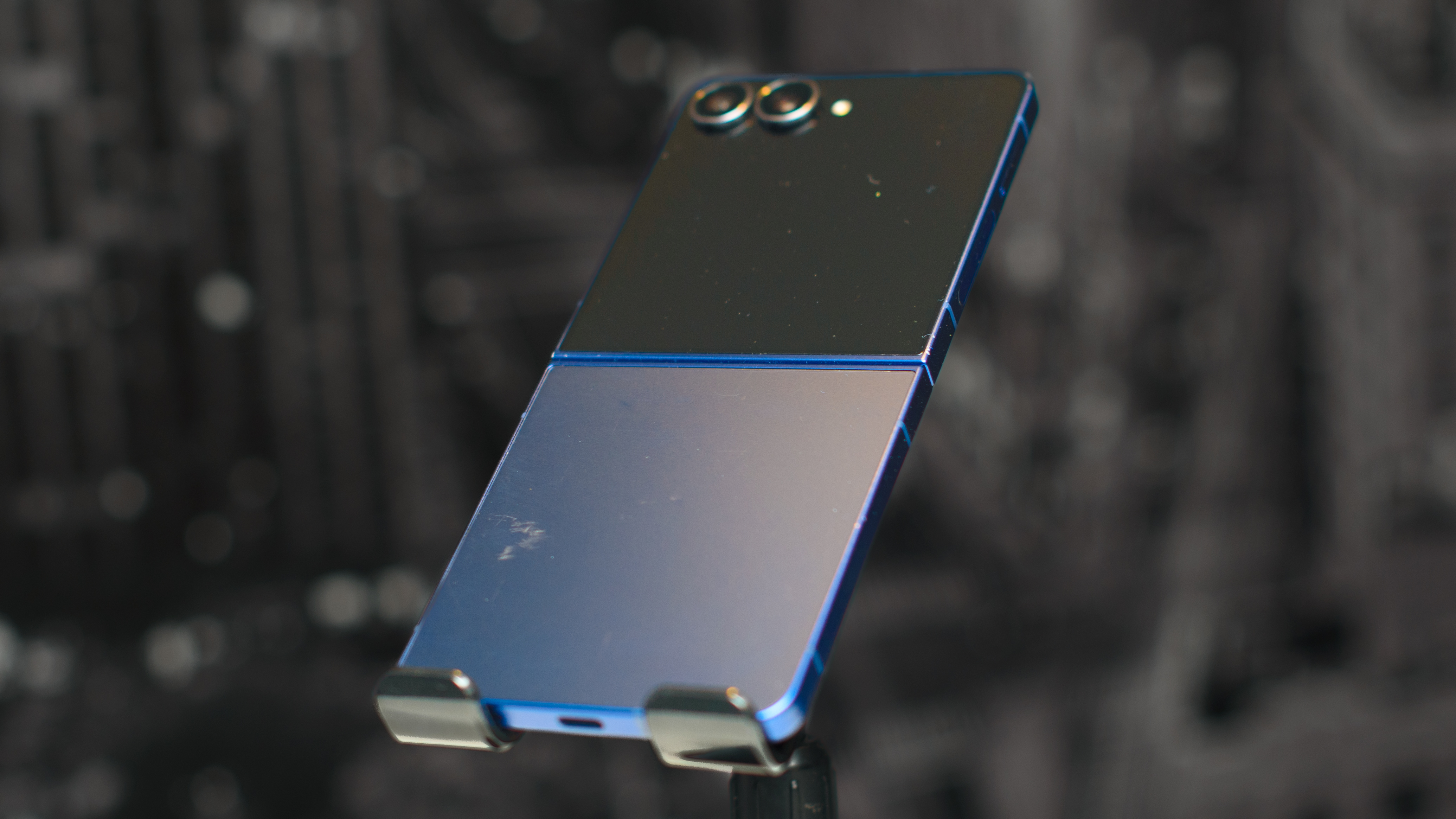
Flip phones just make too much sense, so what’s stopping them from being more popular? First, there’s the durability question. The seventh generation of Samsung’s flip phones still can’t keep dust out, though it can handle being dunked in water thanks to its IP48 rating.
Second, there are sacrifices required to make a folding phone, and the cameras are a downgrade from other Galaxy phones. This year’s Galaxy Z Fold 7 got a 200MP main camera, but the Flip 7 keeps its 50MP cameras on the back. There’s no zoom, only wide and ultra-wide. A 200MP sensor would have alleviated the disappointment of not having a 3x telephoto lens or better.
Finally, the battery takes a hit with the Galaxy Z Flip 7 – maybe too big of a hit. The Galaxy Z Flip 7 doesn’t last long enough. I think this is more of a Samsung problem than a flip phone problem, because the Moto Razr Ultra offers great battery life, though it is marginally thicker and heavier than the Flip 7.
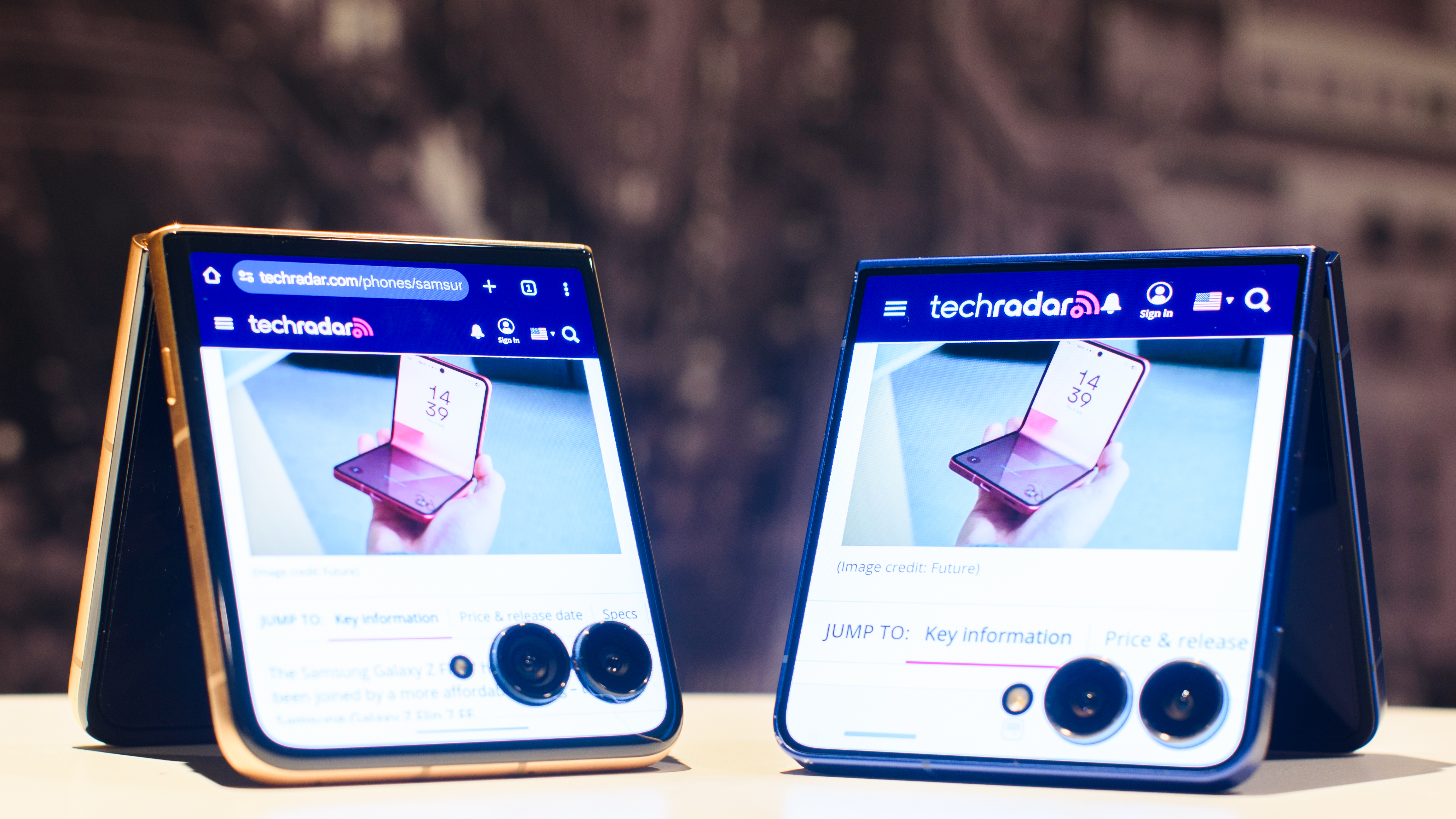
It’s impossible to avoid comparing the Flip 7 to the Motorola Razr Ultra / Razr 60 Ultra, which is its biggest competitor (for now, Apple?). Samsung should be thrashing the Razr, but Motorola has been consistently eating Samsung’s lunch in the flip phone café.
With the Flip 7, Samsung finally catches up to Motorola on the cover display. Its cover display doesn’t just fill the front of the phone, it features the thinnest bezels Samsung has ever used on a Galaxy phone screen.
The Flip 7 can also, albeit with some difficulty, use every app on the cover display. You can navigate with AllTrails maps, watch some TikTok, and play Vampire Survivors without opening the phone.
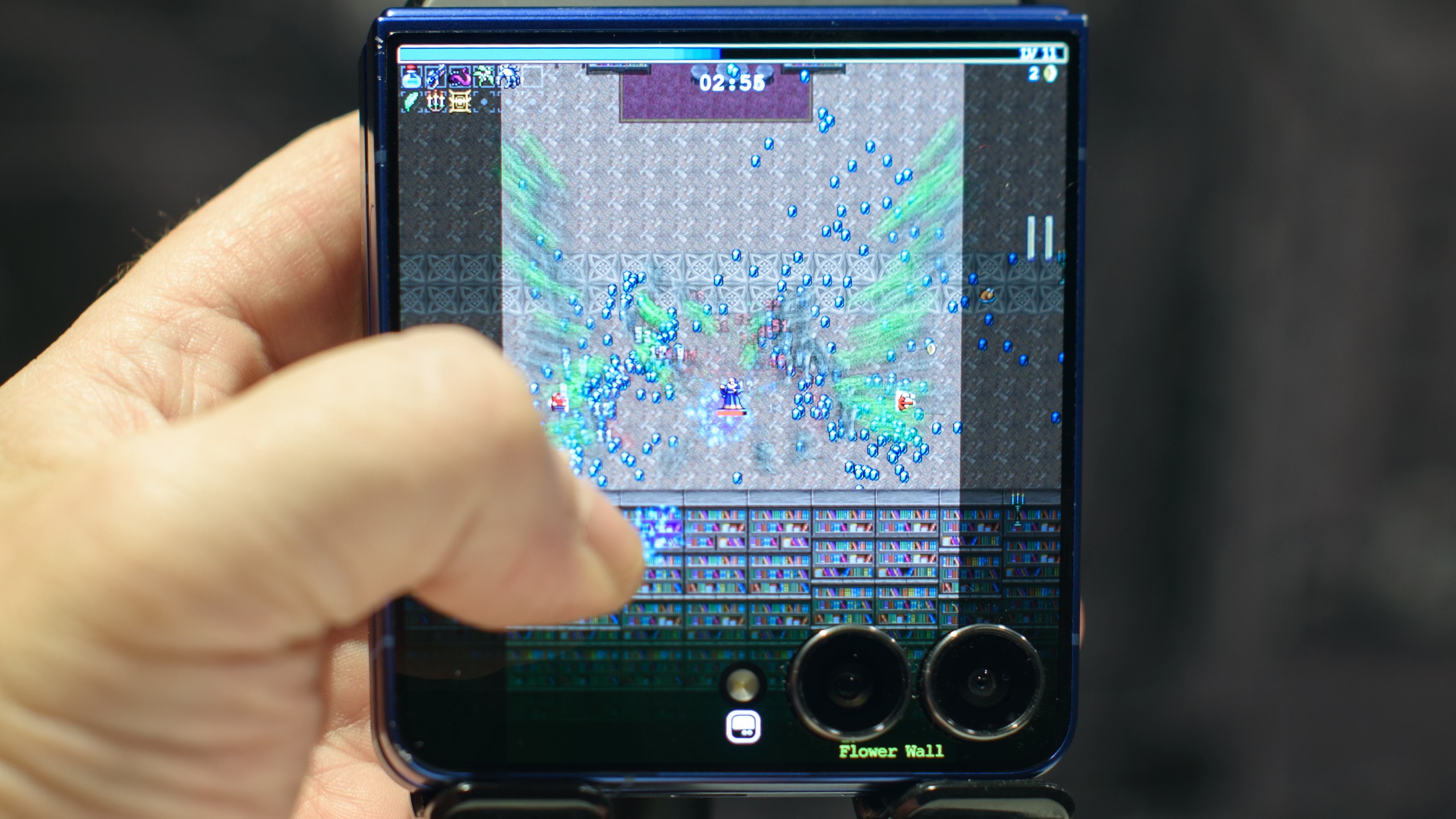
Still, as Samsung takes a big leap forward, Motorola continues its slow and steady pace as the flip-phone frontrunner. Today’s Razr Ultra is faster than the Galaxy Flip 7 in every way. The processor is faster; games run faster; the screen refreshes faster; the battery even charges faster.
Does all of that speed matter? Yes, but some folks will appreciate Samsung’s deep feature set and customization options more than a bit of extra speed.
Samsung’s One UI 8 is a powerhouse, especially if you mix business and pleasure on your smartphone. The Flip 7 also ships with Android 16, and this is the first time Samsung foldable buyers haven’t had to wait for an upgrade to the latest version of Android.
Samsung promises seven years of major Android updates and security patches, more than any competitor except Google. It has a good track record of delivering on such promises, while many Motorola fans are still waiting for promised updates for past Razr phones.
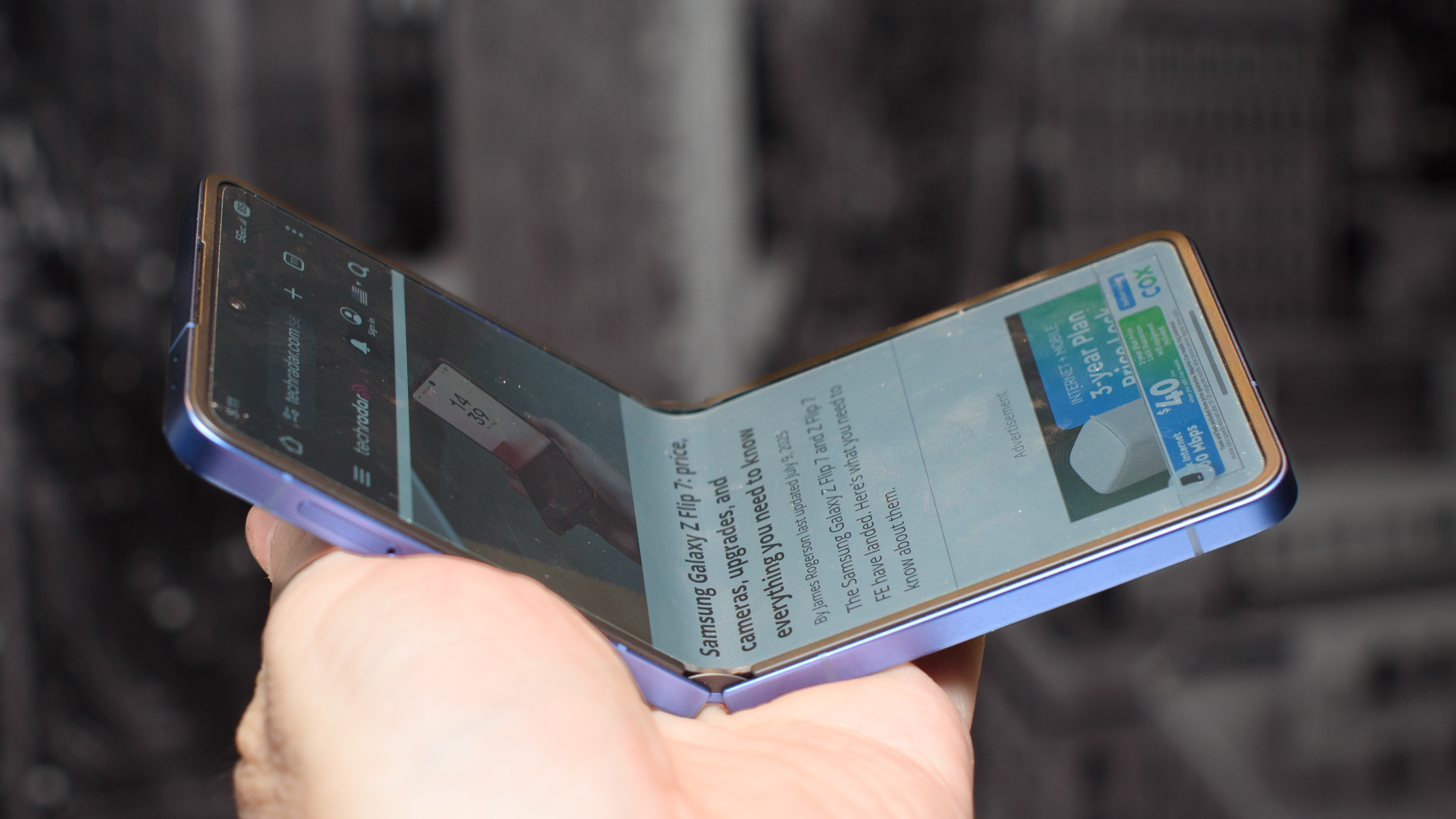
Is it time to consider a flip phone? Absolutely. As you’ve probably noticed, I’m a fan of flip foldables, and the Flip 7, with its versatile cover display, rock-solid design, and hefty set of features, offers more value than the sum of its parts.
In fact, I think most people would appreciate the Flip 7, with its unique benefits, more than other phones that don’t make the same sacrifices.
Ask yourself, does your phone need that tiny zoom camera? Wouldn’t you rather have a phone you can slap shut and slip in your front pocket? And I use the cover display on my Galaxy Z Flip 7 far more than I use the S Pen on my Galaxy S25 Ultra.
I’m rooting for flip phones – and the Galaxy Z Flip 7 is an exceptional flip for serious smartphone users.
Samsung Galaxy Z Flip 7 review: Price and availability
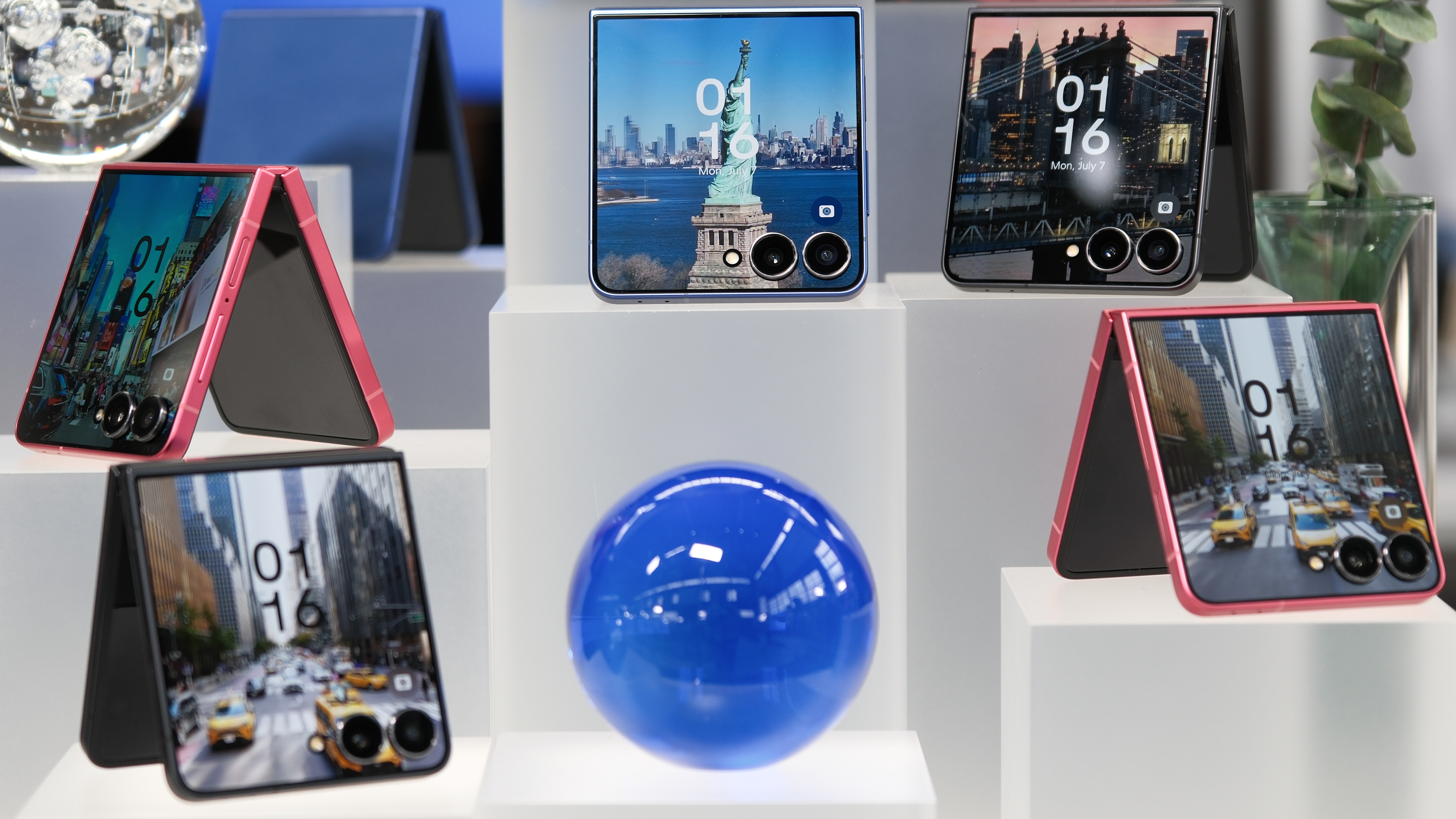
- Starts at $1,099 / £1,049 / AU$1,799 for 256GB of storage
- The best color – Mint – is a Samsung online exclusive
The Galaxy Z Flip 7 starts at $1,099 / £1,049 / AU$1,799, which is the same price as last year’s Z Flip 6. The price seems reasonable to me, considering that you’re getting two displays for the price of one, plus glass that bends in half like a dang magic trick.
Galaxy Z Flip phones used to seem pricey, but the rest of the phone world has slowly crept up to meet Samsung, and now $1,099 / £1,049 / AU$1,799 actually seems fair, especially if you’re getting this phone from your carrier with a steep discount (most US carriers offer it for free with a new contract).
The Galaxy Z Flip 7 costs more than an iPhone 16 Pro (except in Australia, where it’s the same price), and less than an iPhone 16 Pro Max. It costs the same as a Google Pixel 9 Pro XL, or Samsung’s new and thin Galaxy S25 Edge.
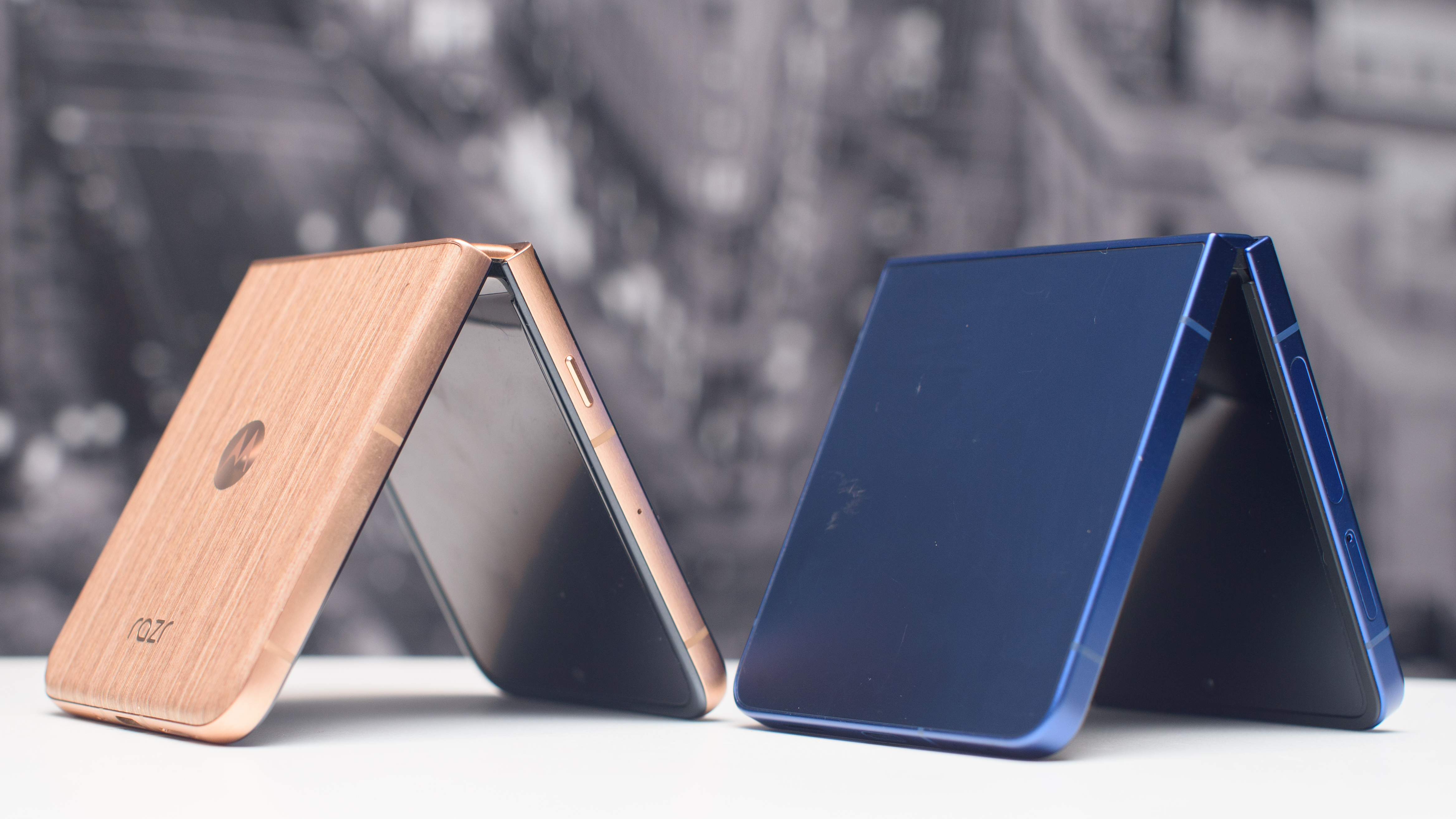
Most importantly, the Flip 7 costs less than the new Motorola Razr Ultra 2025 in the US, where the Razr Ultra starts at $1,299. In the UK, the Razr 60 Ultra costs the same: £1,099. Motorola claims it has been outselling Samsung in flip phones, and its cheapest flip, the Razr 2023, is available for $349 in the US.
At launch, the Galaxy Z Flip 7 only comes in four colors, while last year’s Flip 6 was available in seven hues. Mint and Coralred are exciting (the former is a Samsung web store exclusive); Jetblack and Blue Shadow are more staid. I wish Samsung would try something unique with its materials and finish, but it likes to dress the entire product family in the same sweater for holiday portraits, so all the Galaxy phones look alike finish-wise.
Samsung Galaxy Z Flip 7 review: Specification
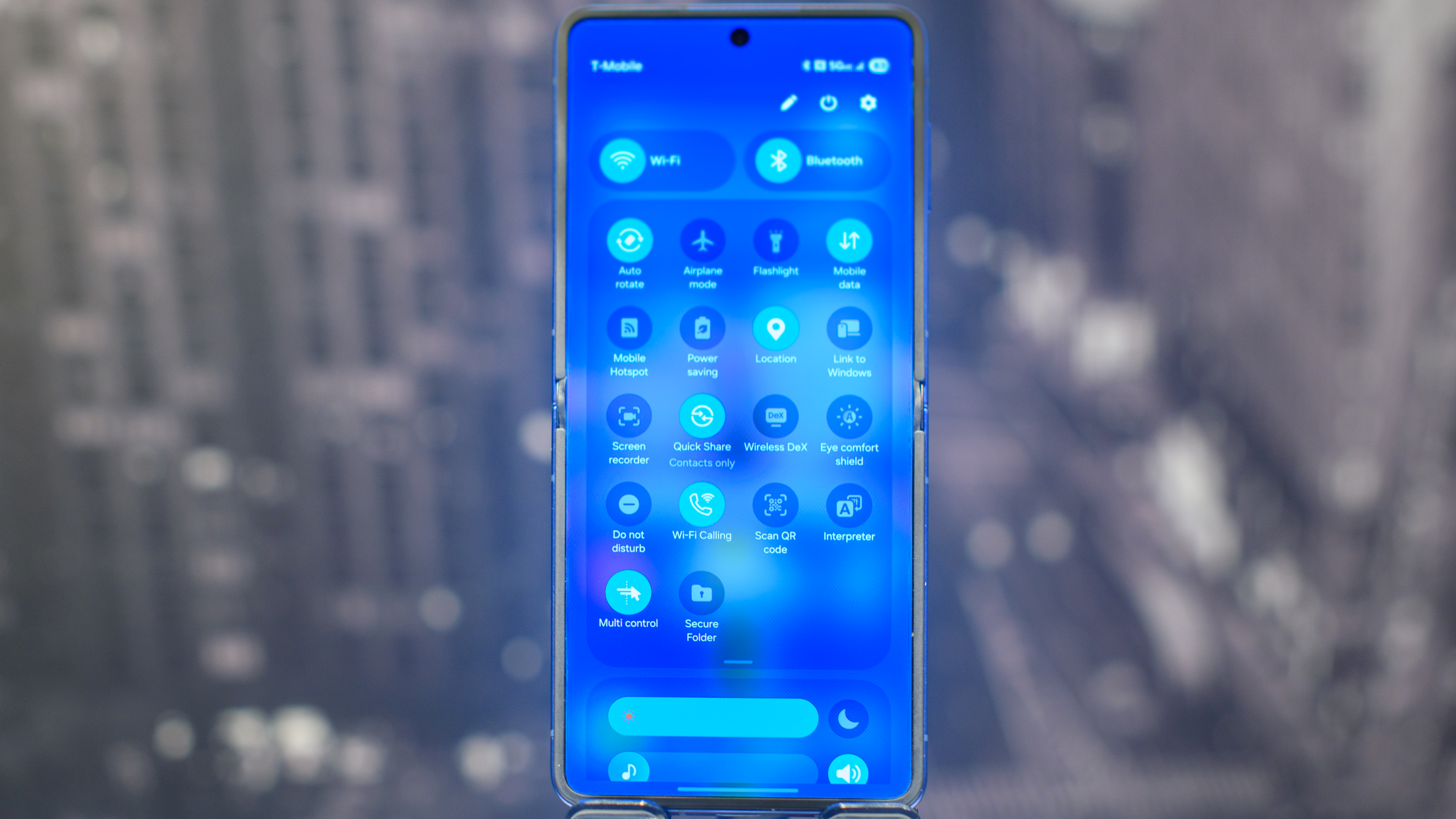
When Samsung admitted that the Galaxy Z Flip 7 would use its own Exynos 2500 processor instead of the Snapdragon 8 Elite for Galaxy found in every other flagship Galaxy phone this year, it was like a record scratch moment from a comedy show. Rumors suggest this could have been the CPU inside every Galaxy S25 phone, but Samsung changed its plans late in the game on those phones. Instead, this new Samsung chip debuts in the Galaxy Z Flip 7.
Samsung claims the Exynos 2500 is more powerful than the Snapdragon 8 Gen 3 for Galaxy that’s in last year’s Flip 6, and this lets the Flip 7 use Samsung DeX, a feature that was oddly omitted from last year’s Flip. I don’t buy it. The Galaxy Z Fold 6 and Z Flip 6 had the same processor and the same RAM, and the Fold 6 could run DeX. Heck, even the Galaxy S24 FE with its mid-range Exynos 2400e chipset could run DeX. I’m calling shenanigans on this claim.
The display is bigger this year, up to 6.9 inches for the internal display from 6.7 inches last year, and the phone is 4mm wider to accommodate this. Otherwise, the specs are mostly unchanged from the Flip 6 – 12GB of RAM; a 50MP wide camera and a 12MP ultra-wide; Wi-Fi 7; Gorilla Glass Victus 2 on the back cover. The battery is larger this year, but maybe not as big as it needs to be.
| Header Cell – Column 0 |
Samsung Galaxy Z Flip 7 |
|---|---|
|
Dimensions (folded): |
85.5 x 75.2 x 13.7mm |
|
Dimensions (unfolded): |
166.7 x 75.2 x 6.5mm |
|
Weight: |
188g |
|
Main display: |
6.9-inch LTPO AMOLED 1080 x 2520 pixels1~120Hz adaptive refresh2,600 nits peak brightness |
|
Cover display:: |
4.1-inch Super AMOLED948 x 1048 pixels |
|
Chipset: |
Samsung Exynos 2500 (3nm) |
|
RAM: |
12GB |
|
Storage: |
256GB / 512GB |
|
OS: |
Android 16 / One UI 8 |
|
Primary camera: |
50MP f1.8 |
|
Ultrawide camera: |
12MP f2.2 |
|
Selfie Camera: |
10MP f2.2 |
|
Battery: |
4,300mAh |
|
Charging: |
25W wired; 15W wireless |
|
Colors: |
Blue Shadow, Jetblack, Coralred, Mint |
Samsung Galaxy Z Flip 7 review: Design
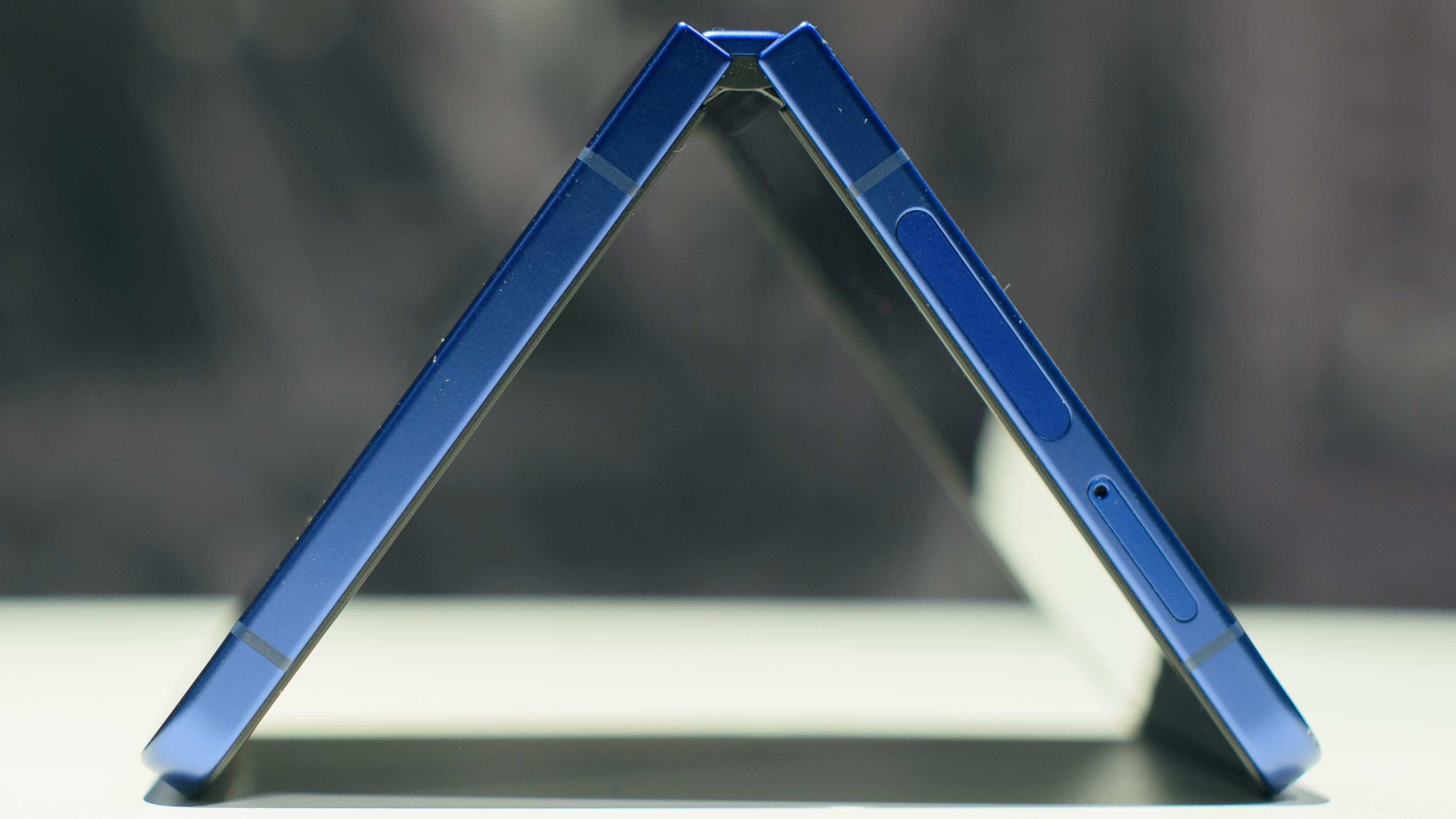
- Big and beautiful cover display with ultra-slim bezels
- Nice colors, but design is a bit bland for a flip phone
After years of me complaining that the Galaxy Z Flip wasn’t using enough of its cover space for the front screen, Samsung finally listened (I’d like to think). The 4.1-inch screen on the front of the Galaxy Z Flip 7 takes up every possible inch – Samsung says it has the thinnest bezel ever on a Galaxy phone.
The Flip 7’s cover screen looks like the future of phone displays, and I’m excited for the internal screen to catch up, with a bezel this slim.
Otherwise, the phone is a standard 2025 Galaxy model. It has flat sides, with the power and volume buttons on the right. The power key acts as an effective fingerprint scanner, though it’s more recessed than the power button on other Galaxy phones, and it was hard to find in the dark.
My review sample is Blue Shadow, and the blue certainly has a nice depth to it, though I still wish the color had more pop – there’s not much room for color on a flip phone. Only one half of one side of the phone is actually blue; the rest is all display. Three quarters of the phone is a screen. Is that worrisome? Maybe it should be.
I’ve had the Galaxy Z Flip 7 a week and I’ve been using it extensively. I throw it into my bag with my car keys, and let it bang around with my cameras and other phones in my pockets.
I don’t have a case on it, but some friends at UAG are sending an armored case my way. It may be too late. My back glass – a Gorilla Glass Victus 2 panel – already has noticeable scuffs and scratches marring the shadowy blue. I don’t see any nicks on the screens, so that’s a plus, but I should have gotten that case before I started using this phone. Consider yourself advised.
Samsung Galaxy Z Flip 7: Displays
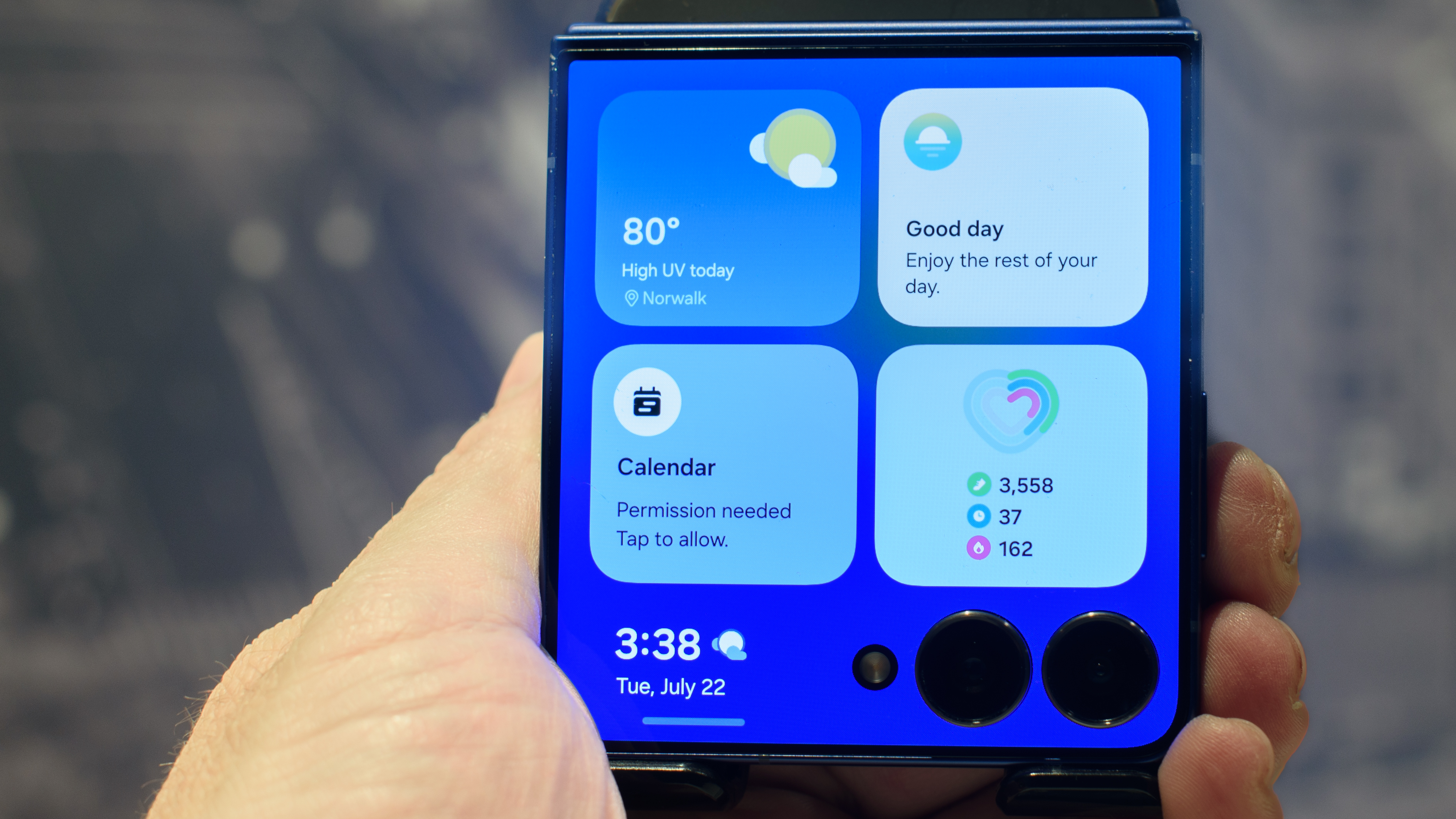
- Big inner display is super-bright and clear
- Cover screen is a showstopper – it’s the future of displays
I could rave about the new cover display again, but I’ll start with the impressive inner screen, because the Galaxy Z Flip 7 has been very satisfying to use thanks to this exceptionally bright and clear AMOLED. It was always a joy to open, even in bright outdoor light.
Don’t worry about the crease on the inner screen. It’s completely invisible when you’re using the phone, and it never bothered my fingers when I was swiping across the screen. After all these years it still feels like a magic trick to fold a piece of glass in half, and it still shocks friends who haven’t seen a flip foldable in person before.
The Galaxy Z Flip 7’s cover display is, as I’ve mentioned, also spectacular. The ultra-thin bezels make it seem to disappear, and you get plenty of room to work with apps and widgets on the 4.1-inch space. It’s a great improvement to the Flip line, and one I’ve been impatiently waiting to see.
Samsung Galaxy Z Flip 7: Software
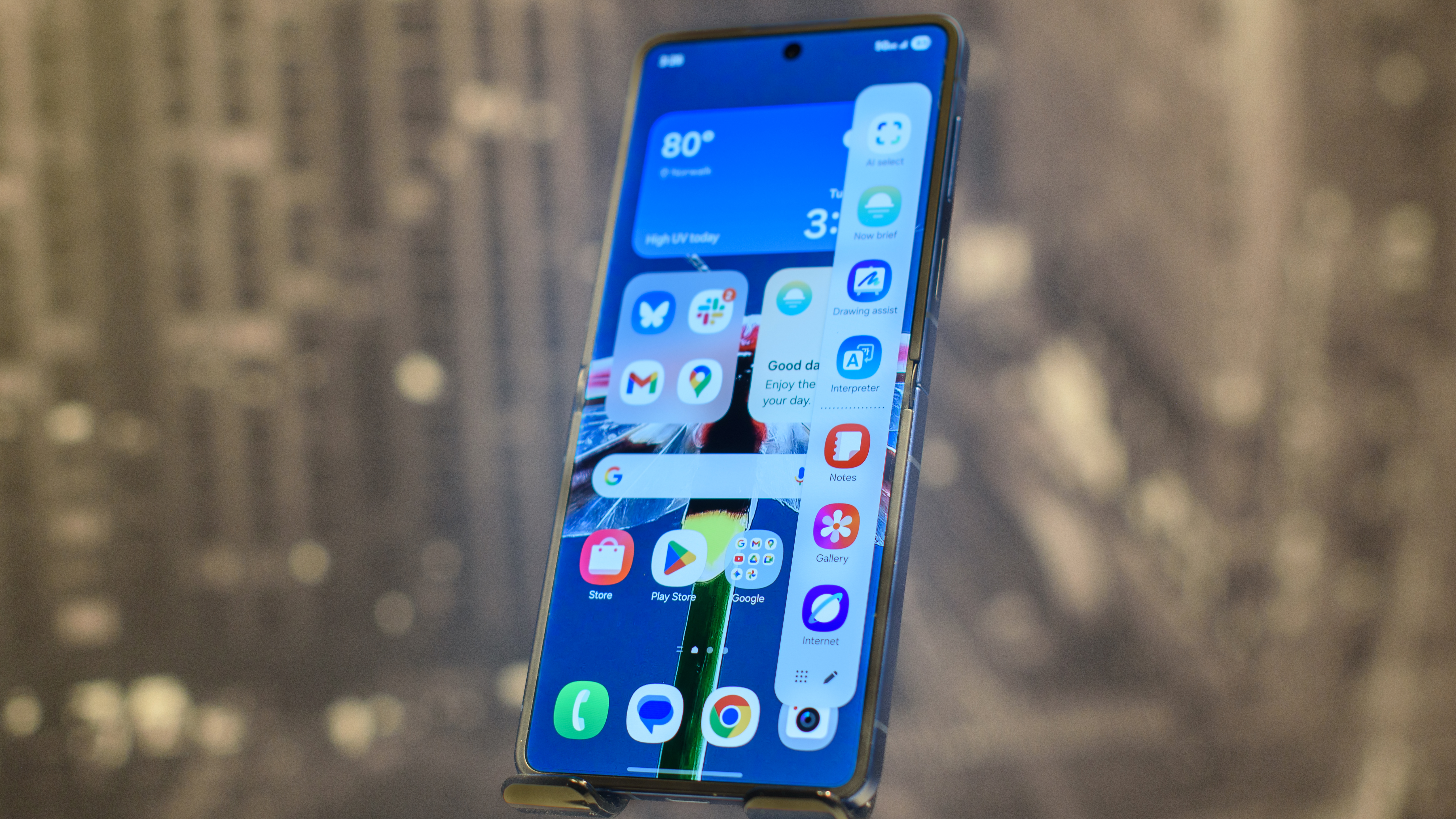
- The best flip for getting things done
- Maybe too focused on productivity, not enough on fun
If you want a smartphone you can tweak and customize to your heart’s content, get a Samsung phone. If you prefer something simpler, you can still grit your teeth and ignore most of the settings, the pop-up features, and the extra steps required to make things work.
How bad is Samsung’s software? Take the cover display, for example. On the Motorola Razr, when you’re using an app and you close the phone, the app shows up on the cover display. That’s simple and intuitive. On the Galaxy Z Flip 7? Not even close.
To use an app on the front screen, you have to find the setting to enable apps on the cover display. This isn’t in the Cover Display settings menu; it’s in a menu called Advanced Settings, and then Labs.
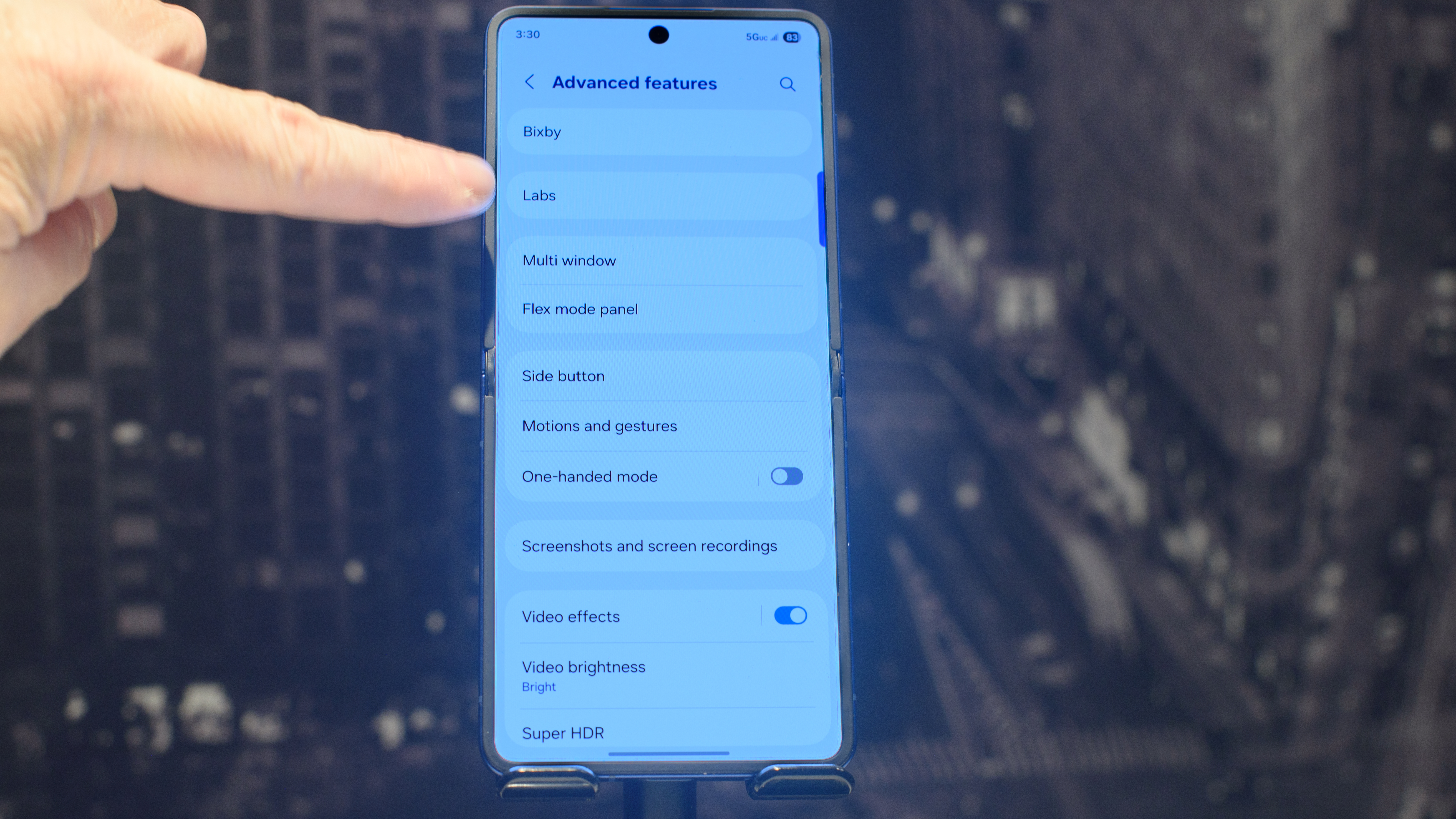
Labs. Can you imagine a more frightening way to hide a crucial feature? Why not just call it Dungeon?
And once you find Labs, you’ve only gotten started. You can enable a few pre-selected apps to work on the cover display – Maps, Messages, Netflix – or you can download another widget called Multistar from the Samsung Galaxy App Store.
Multistar creates a home screen that lives on your cover display, and on that screen you can add any app on your phone. On the cover, you swipe to the Multistar screen and tap the app you want to open.
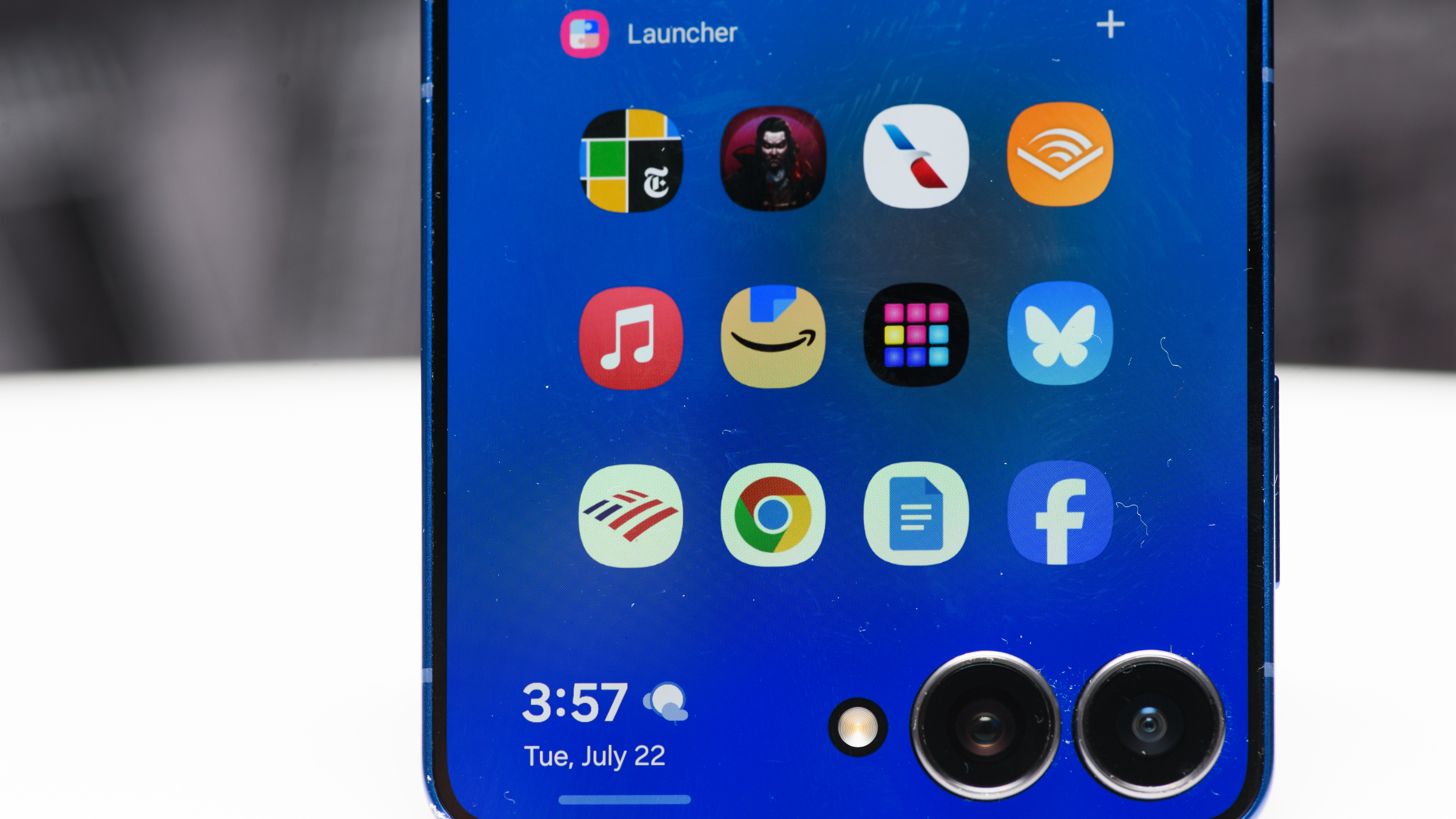
Unfortunately, you can’t set any of this up on the cover display itself. You can’t even add widgets to the cover display without opening the phone. It feels like Samsung is still getting the hang of this whole cover-display thing, but the Flip7 is its best effort yet.
This complex procedure exemplifies Samsung’s software ‘philosophy,’ if it has one. The phone has lots of features, and they all work… somehow. Finding those features and making them work can feel like an endless chore, and then features work in a way that seems slapped together and haphazard.
I don’t want to open an app twice, on two different home screens, after loading a specialized widget hidden under three layers of settings. I just want to open an app, close my flip phone, and see the same app on the cover. Easy peasy.
Aside from those issues, I have many questions about Samsung’s AI strategy. The company has a habit of talking up features that never materialize. The Galaxy Z Flip 7 was supposed to have a special version of Google Gemini that could talk to me live while the flip screen was half closed, but I haven’t been able to find a mode that works that way.
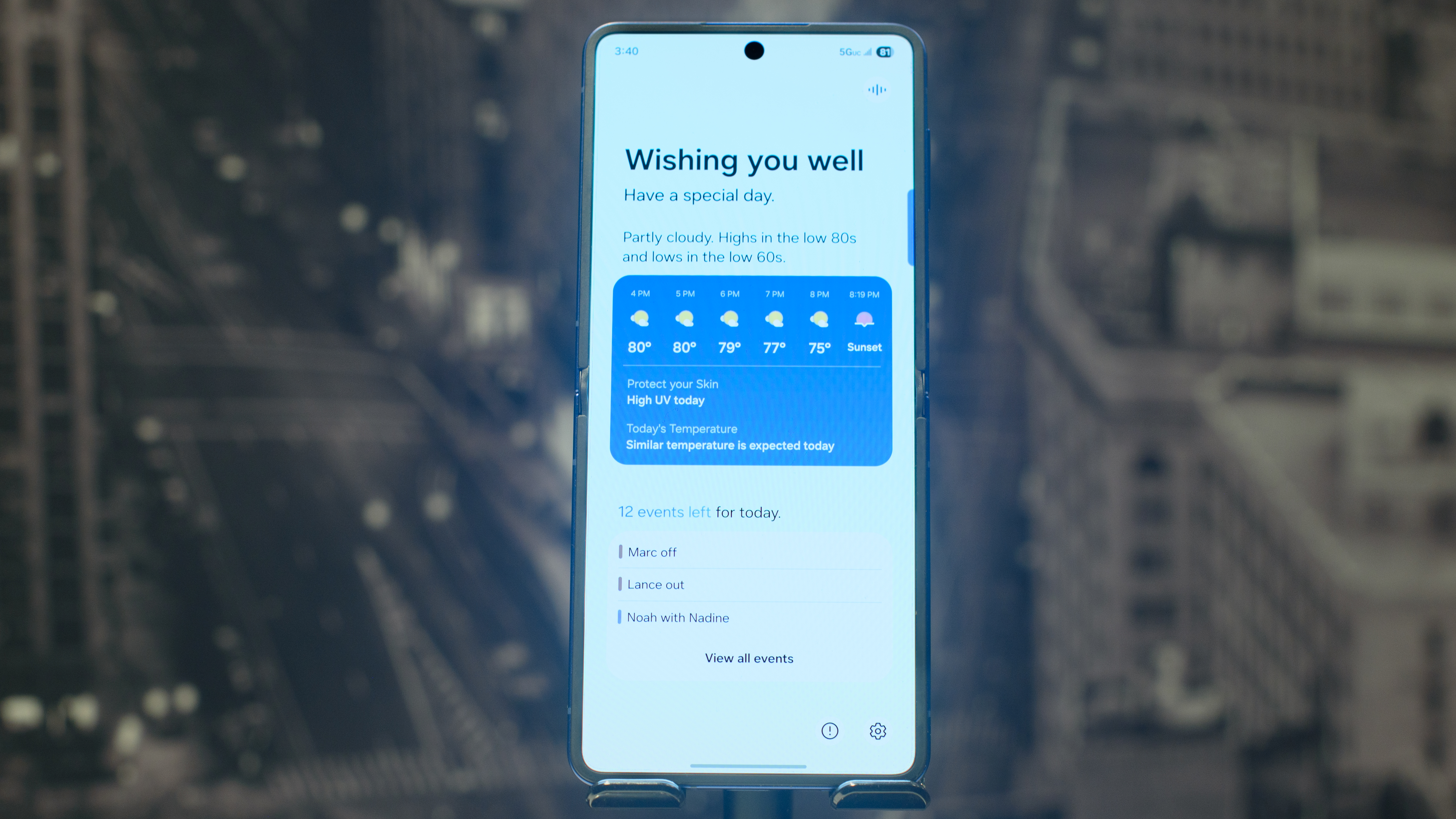
Samsung’s Now Brief home screen widget and app is also a key selling point for its AI features, but it’s truly a useless bit of software. It never offers me more than the weather and the first few appointments on my company calendar, which are always people who scheduled a day off.
Samsung promised that this Now Brief and its Galaxy AI features would offer highly personalized information as the AI gets to know you through your Samsung devices and usage behavior. I carry multiple Samsung phones and wear a Galaxy Watch Ultra, and I’ve never seen anything personalized for my interests or habits.
Samsung Galaxy Z Flip 7: Cameras
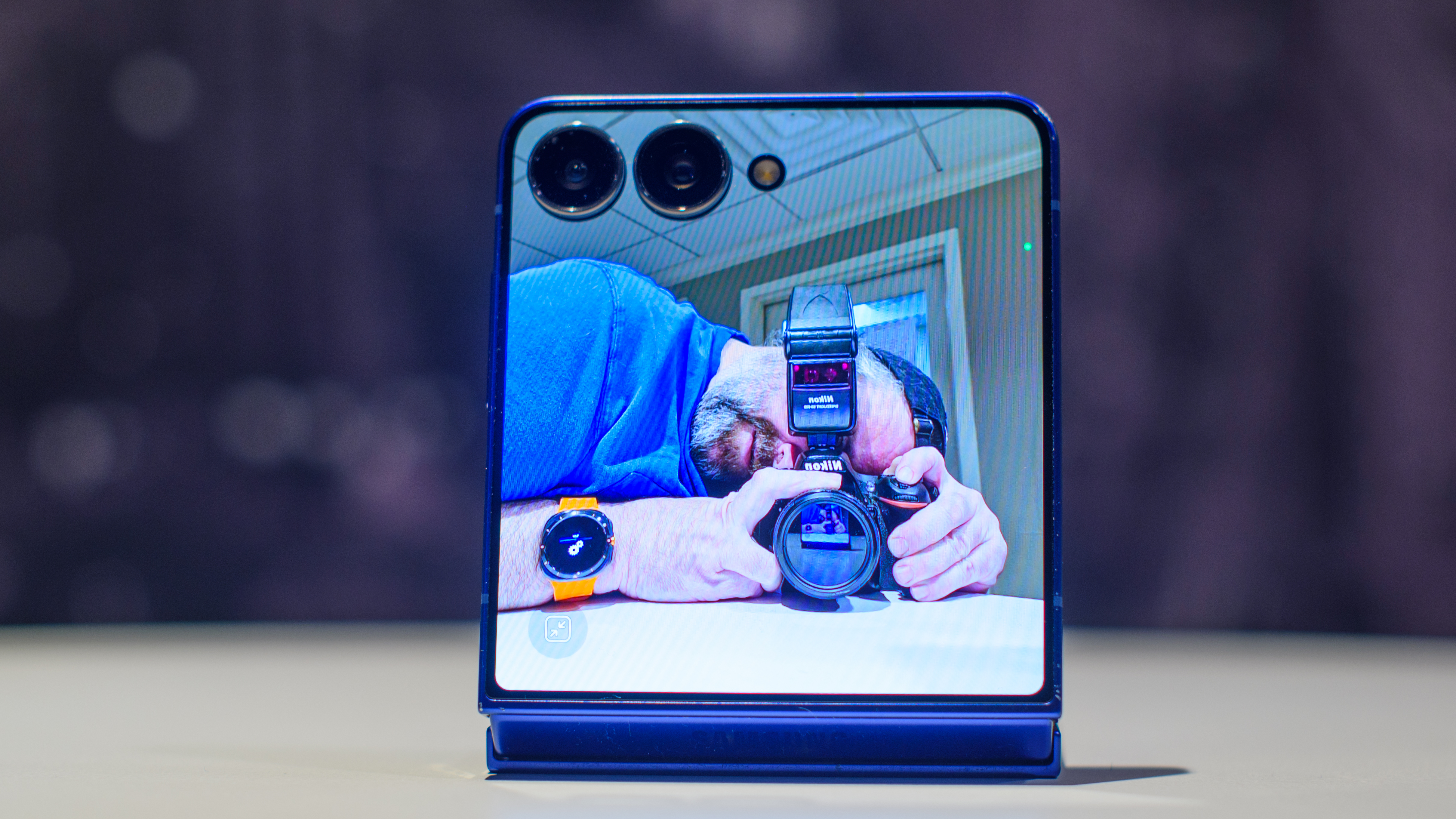
- Very good cameras with fun and useful features
- Samsung is clearly tuning its cameras for more realistic photos
The Galaxy Z Flip 7 has a good set of cameras that took photos I enjoyed sharing. Images taken with Samsung cameras usually pop with bright colors and a highly-sharpened look, but I’ve noticed on the last couple of phones (this one and the Galaxy S25 Edge) that Samsung has been toning down this artificial look for a more natural photography style, closer to what the iPhone produces. I’m all for it.
Don’t worry, Samsung fans, you still get photos that look great, especially if you opt for Samsung’s specialized modes.
Samsung’s Portrait mode is probably the best on any smartphone. It isolated my subject neatly and blurred the background for a gorgeous look. Samsung’s Food mode is by far the best camera phone mode for taking food photos – I reach for my Galaxy phone whenever I bake something tasty and I want to share it.
Samsung’s AI editing features are also the best I’ve used on any smartphone. When you cut an unwanted person or object out of your photo, the Galaxy Z Flip 7 does a perfect job of filling in the gaps. If there are floor boards or vertical blinds behind them, it fills these in seamlessly.
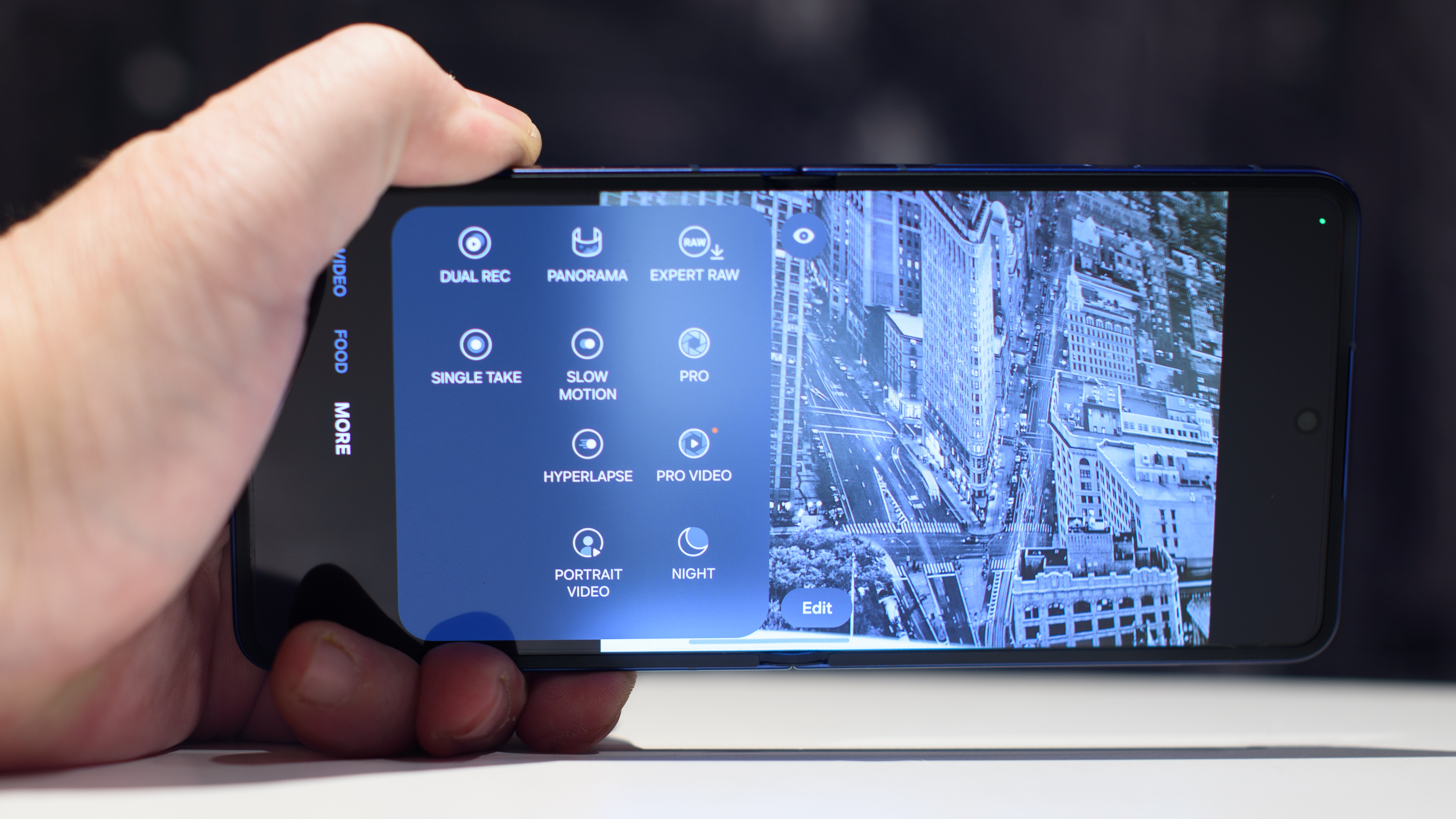
Of course, the Galaxy Z Flip 7’s coolest camera trick is letting you use the cover display as your viewfinder for photos. You can take selfies at the full 50MP resolution when you point the main camera at yourself and use the cover display. You can also set the phone in an interesting position – way down low or hanging from up high – and then take shots with voice commands or by signaling the camera with a wave.
My only complaint is the lack of a real zoom lens. I have a kid who plays sports, and the digital zoom isn’t good enough to capture him on the field. If you take photos from far away often, you’ll miss the lack of real zoom. Maybe Samsung should try a zoom camera instead of an ultra-wide on the Flip 8.
Samsung Galaxy Z Flip 7: Performance
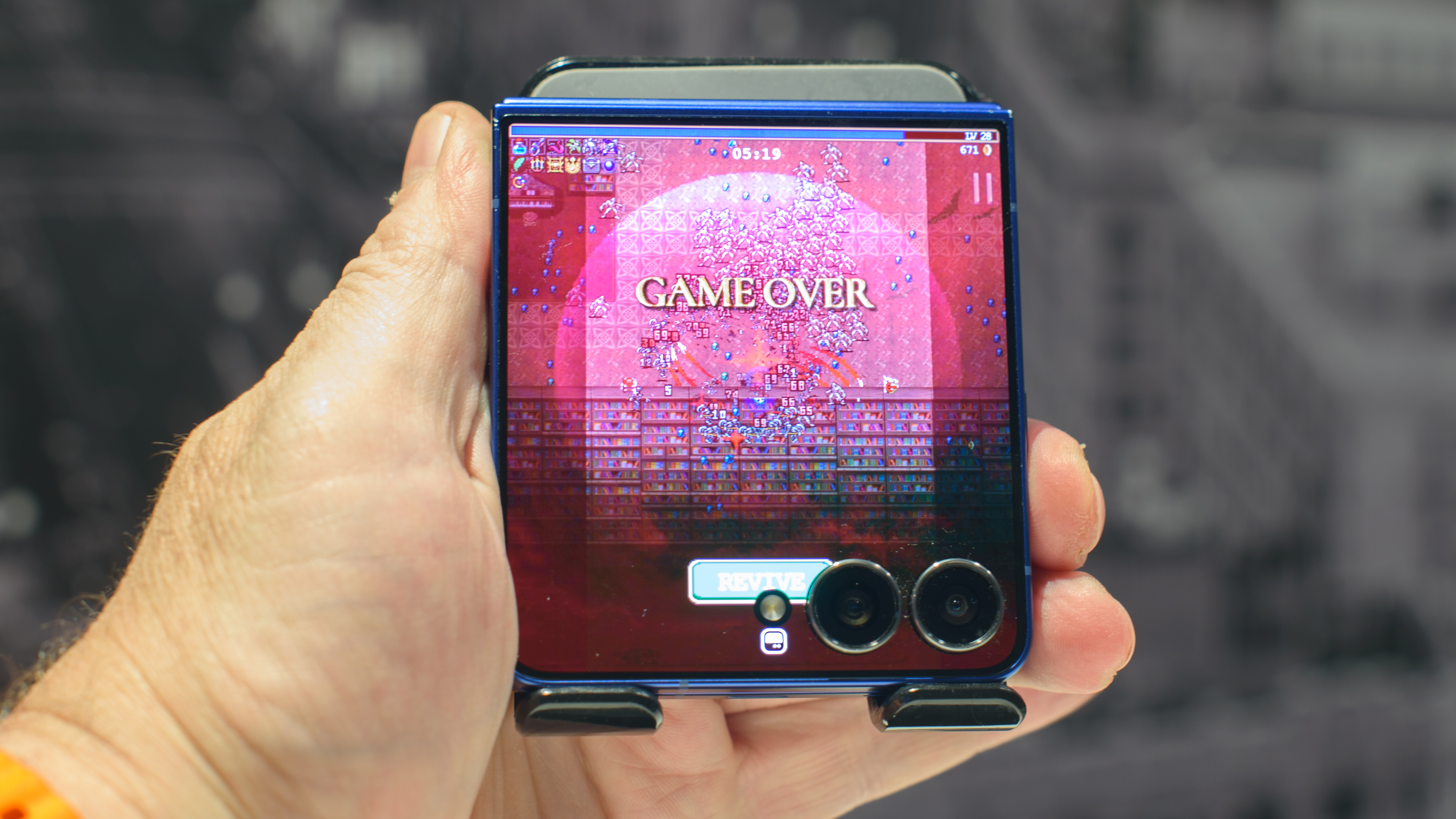
- Performance is adequate, but not superlative
- Exynos is not going to win over any fans from Snapdragon
In my real-world tests, the Galaxy Z Flip 7 performed well. I used it for a variety of complex tasks, including running two apps with one at the top and the other at the bottom of the inner screen, and plugged the phone into my monitor for the full Samsung DeX treatment.
I like Samsung DeX because I have all of my work accounts for email, Slack, and Google Drive on my phone, so when I use my phone I don’t need to log in again, as I do when I use my laptop. I just plug my phone into my USB-C laptop dock and get a little bit of work done, then unplug and go. The Galaxy Z Flip 7 was great at this, and I’m happy to see DeX on the Flip 7 after missing it on last year’s Flip 6.
That said, in benchmark tests it’s clear that the Samsung Exynos 2500 lags behind the Qualcomm Snapdragon 8 Elite, and it’s a shame that the Flip 7 and Galaxy Z Fold 7 run on different platforms.
In Future Labs tests, the Exynos 2500 did not beat the Galaxy S25’s Snapdragon 8 Elite for Galaxy platform in a single test – not processor speed, graphics performance, web browsing, AI and machine learning tests, nor any other benchmark we run. In every way, the Exynos 2500 is inferior to the Snapdragon 8 Elite.
Worst of all may be the chip’s power consumption, which I’ll get to in the next section. Samsung isn’t doing itself any favors by ditching one of the best mobile platforms I’ve ever used – the Snapdragon 8 Elite – and I hope it doesn’t ever make the same mistake again.
Samsung Galaxy Z Flip 7: Battery
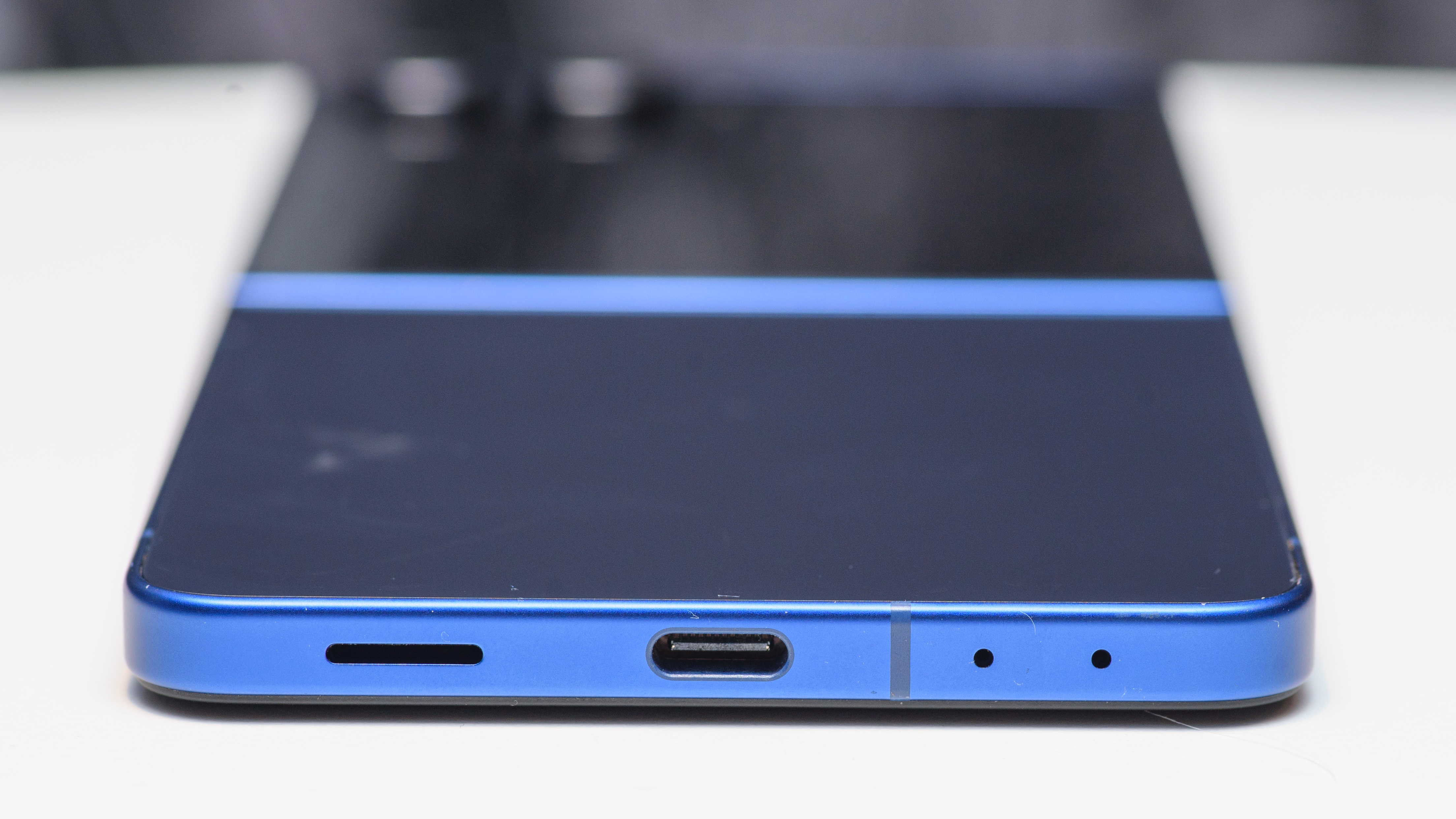
- Battery life is unimpressive and charging should be faster
- Could the Exynos platform be to blame?
The Galaxy Z Flip 7 usually lasted a full day in my testing, unless I used it extensively for taking and editing photos or playing games. On camera testing days, I needed to charge up to keep it going until bed time.
It could have been worse, but I wonder if the cover display makes a difference. After all, there were plenty of times when I used the cover when I might have used the full screen on a normal phone, and the inner screen certainly draws more power than the half-sized cover display.
The reason I was pessimistic about the battery life was the Galaxy Z Flip 7’s poor showing in Future Labs battery testing. The Z Flip 7 has a battery that’s 300mAh larger than the cell in the Z Flip 6, but it only delivers about 90 minutes more runtime in our rundown tests.
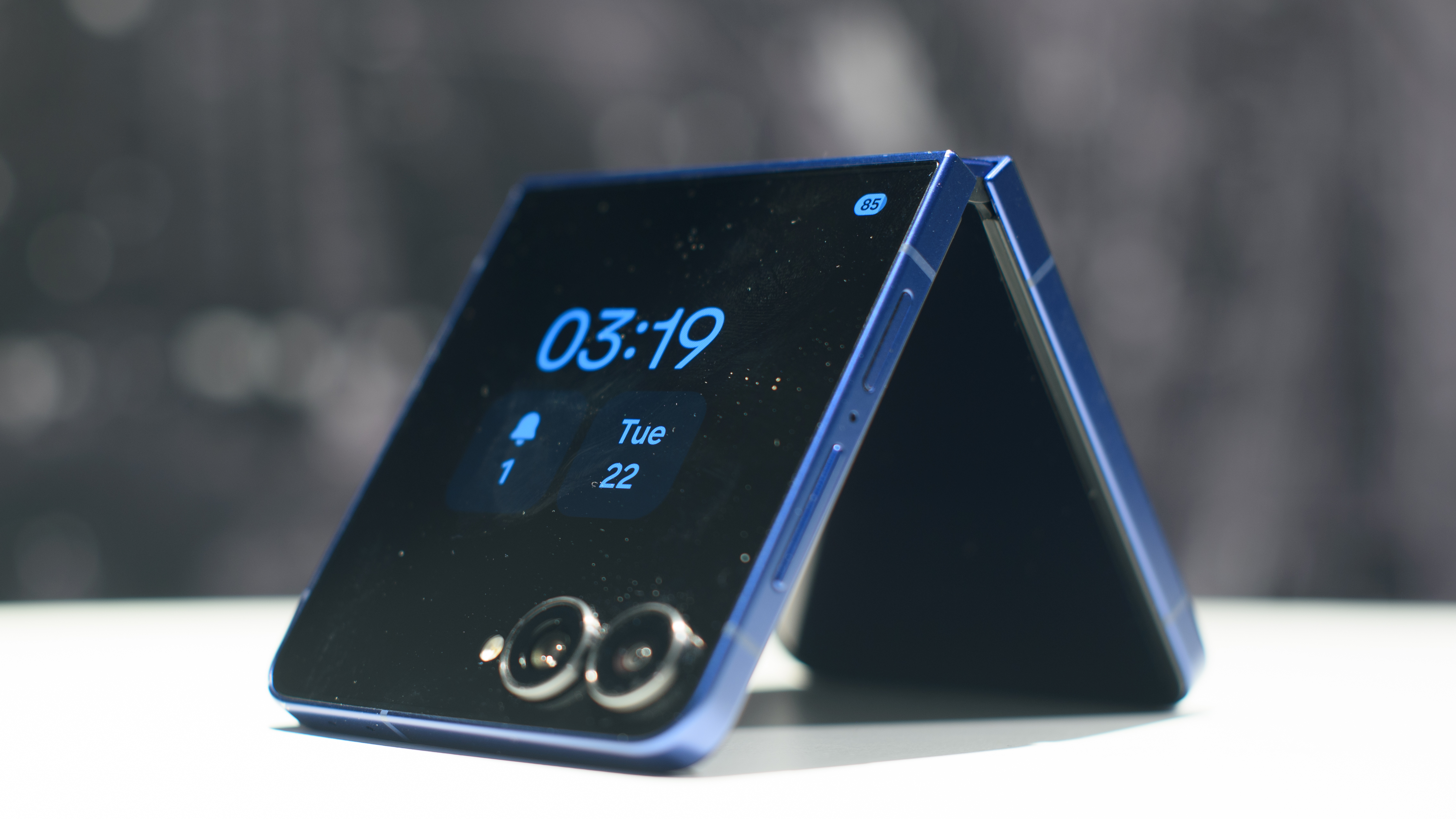
Compare that to the Motorola Razr Ultra, which uses the Qualcomm Snapdragon 8 Elite chipset. The Razr Ultra has a battery that’s 400mAh larger than the Galaxy Z Flip 7’s, but in our tests it lasted almost 6.5 hours longer than the Z Flip 7! The Z Flip 7 died in just under 12.5 hours in our lab tests, while the Razr Ultra lasted almost 19 hours.
I have to assume the Snapdragon is sipping power compared to Samsung’s Exynos chip, and that’s why the Razr Ultra lasts so much longer with only a slightly larger battery. Motorola’s displays are just as bright, and actually pack more pixels, which means they could draw more power. If it isn’t the display saving electricity, it must be the chipset.
Should you buy the Samsung Galaxy Z Flip 7?
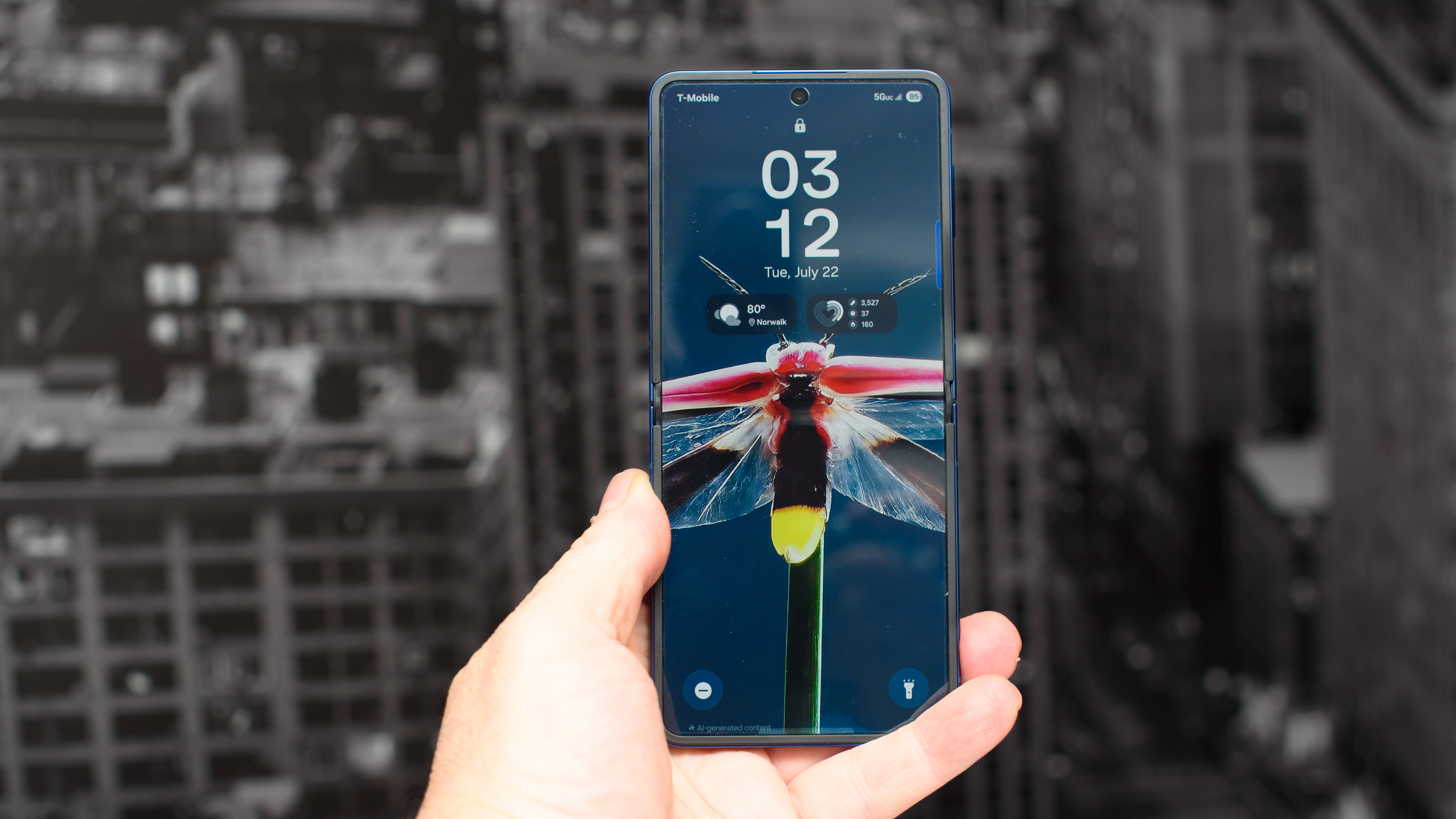
|
Attributes |
Notes |
Rating |
|---|---|---|
|
Value |
Solid value considering you get two displays for the price of one, plus all of the technology Samsung packs inside. There are cheaper flip phones, but none that can do as much as the Flip 7. |
4 / 5 |
|
Design |
A nice design that will be familiar to Samsung fans. I still wish it were more exciting, and some scuffs during my review time left me more concerned about durability than before. |
4 / 5 |
|
Display |
Excellent displays inside and out. The inner display is bright and clear and a joy to use. The cover screen has the smallest bezels ever, and it’s more useful than before. |
5 / 5 |
|
Performance |
The Flip 7 can do more than ever, but Samsung doesn’t make it easy. Expect hidden features, extra steps, and hacked-together solutions. Also, the AI features don’t seem fully baked. |
3 / 5 |
|
Software |
Nice cameras that tone down the saturation for a more realistic look. The best camera modes in the biz, including great portraits and appetizing food shots. Solid AI editing tools remove artifacts flawlessly. I wish it had zoom. |
4 / 5 |
|
Cameras |
Disappointing performance all round thanks to the Exynos 2500. I’m being extra harsh so Samsung doesn’t make this mistake again and use an inferior Exynos chip when the Snapdragon is obviously superior. This phone should be faster. |
3 / 5 |
|
Battery |
Battery life isn’t terrible, but it’s disappointing considering other phones have seen huge advancements thanks to new battery tech and more efficient (Snapdragon) platforms. It still lasts a full day, most of the time. |
3 / 5 |
Buy it if…
Don’t buy it if…
Samsung Galaxy Z Flip 7 review: Also consider
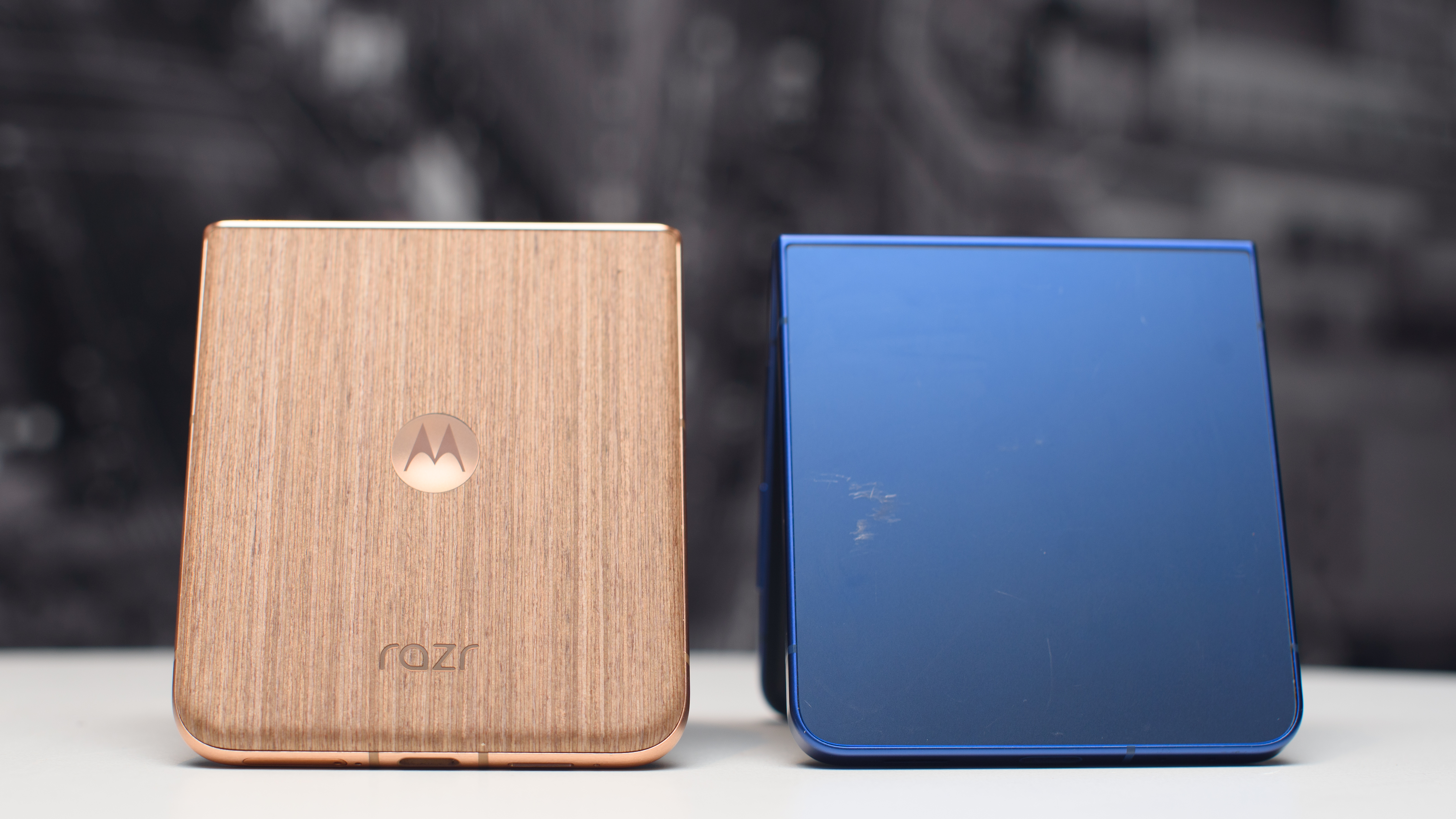
| Row 0 – Cell 0 |
Samsung Galaxy Z Flip7 |
Motorola Razr Ultra 2025 / Razr 60 Ultra |
Samsung Galaxy S25 Plus |
|
Price |
$1,099 / £1,049 / AU$1,799 |
$1,299 / £1,099 |
$999 / £999 / AU$1,699 |
|
Processor |
Samsung Exynos 2500 |
Qualcomm Snapdragon 8 Elite |
Qualcomm Snapdragon 8 Elite for Galaxy |
|
Cameras |
50MP main; 12MP ultra-wide; 10MP selfie |
50MP main; 50MP ultra-wide; 50MP selfie |
50MP main; 12MP ultra-wide; 10MP telephoto (3x zoom); 12MP selfie |
|
Future Labs Battery Test (HH:MM:SS) |
12:24:30 |
18:57:12 |
18:46:04 |
How I tested the Samsung Galaxy Z Flip 7
- Review test period: two weeks
- Testing included: everyday use, including web browsing, social media, photography, gaming, streaming video, and music playback
- Tools used: Geekbench 6, and Nit-brightness-testing system
I tested the Galaxy Z Flip 7 for two week before writing this review, using it as my primary work phone for that entire period. I tested the phone using a T-Mobile account provided by Samsung for my review period.
I used the phone extensively for communicating with colleagues, using apps including Slack, Google Meet, Airtable, Gmail and more. I played games including Vampire Survivor and Call of Duty Mobile, and I connected the phone to an Xbox Wireless Controller for games.
I used Android Auto with the Flip 7 in my car, a Kia EV6, for navigation, listening to music and audiobooks, and sending messages using voice input.
I connected the Flip 7 to my Galaxy Buds Pro 3 earbuds, Moto Buds Loop, a Galaxy Watch Ultra smartwatch, and Ray-Ban Meta smartglasses. I used the phone for fitness tracking, snore and sleep apnea detection with the Galaxy Watch Ultra, and other health and fitness activities.
Future Labs tests phones using a mix of third-party benchmark software and proprietary, real-world tests. We use Geekbench, CrossMark, JetStream, WebXPRT and Mobile XPRT, and 3DMark for performance testing. We test a phone’s performance on video tasks using Adobe Premiere Rush. We also measure display color output and brightness.
For battery testing we perform proprietary tests that are the same for every phone, which enable us to determine how long it takes for the battery to run down.
First reviewed July 2025
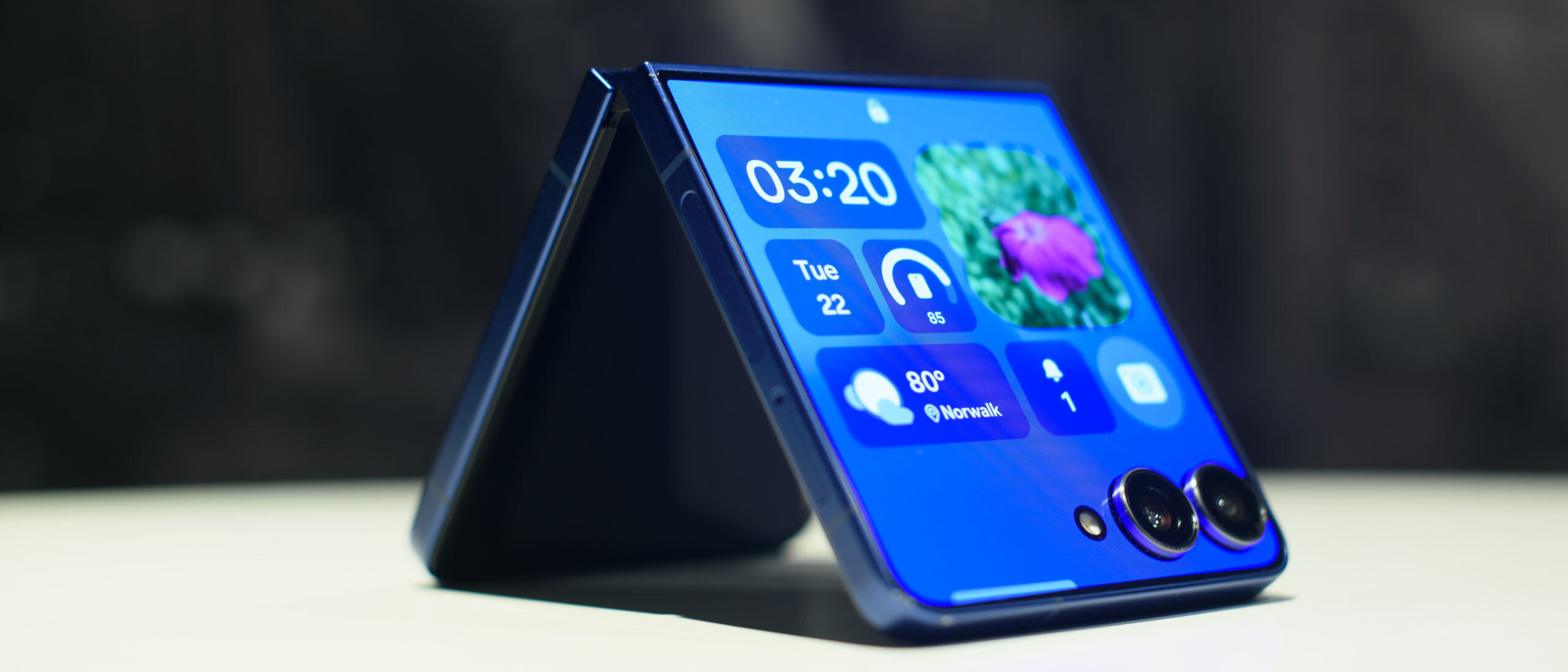
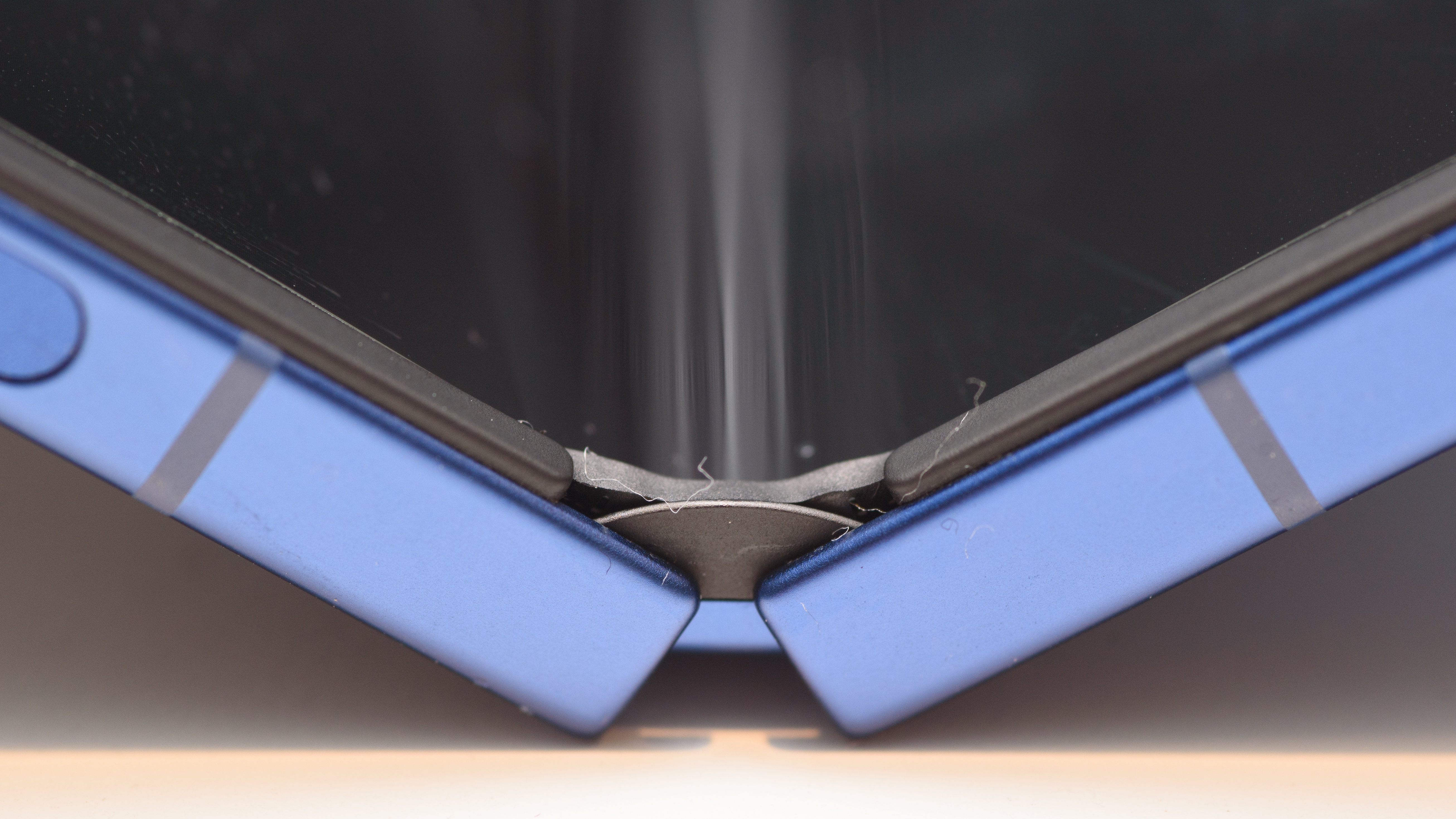
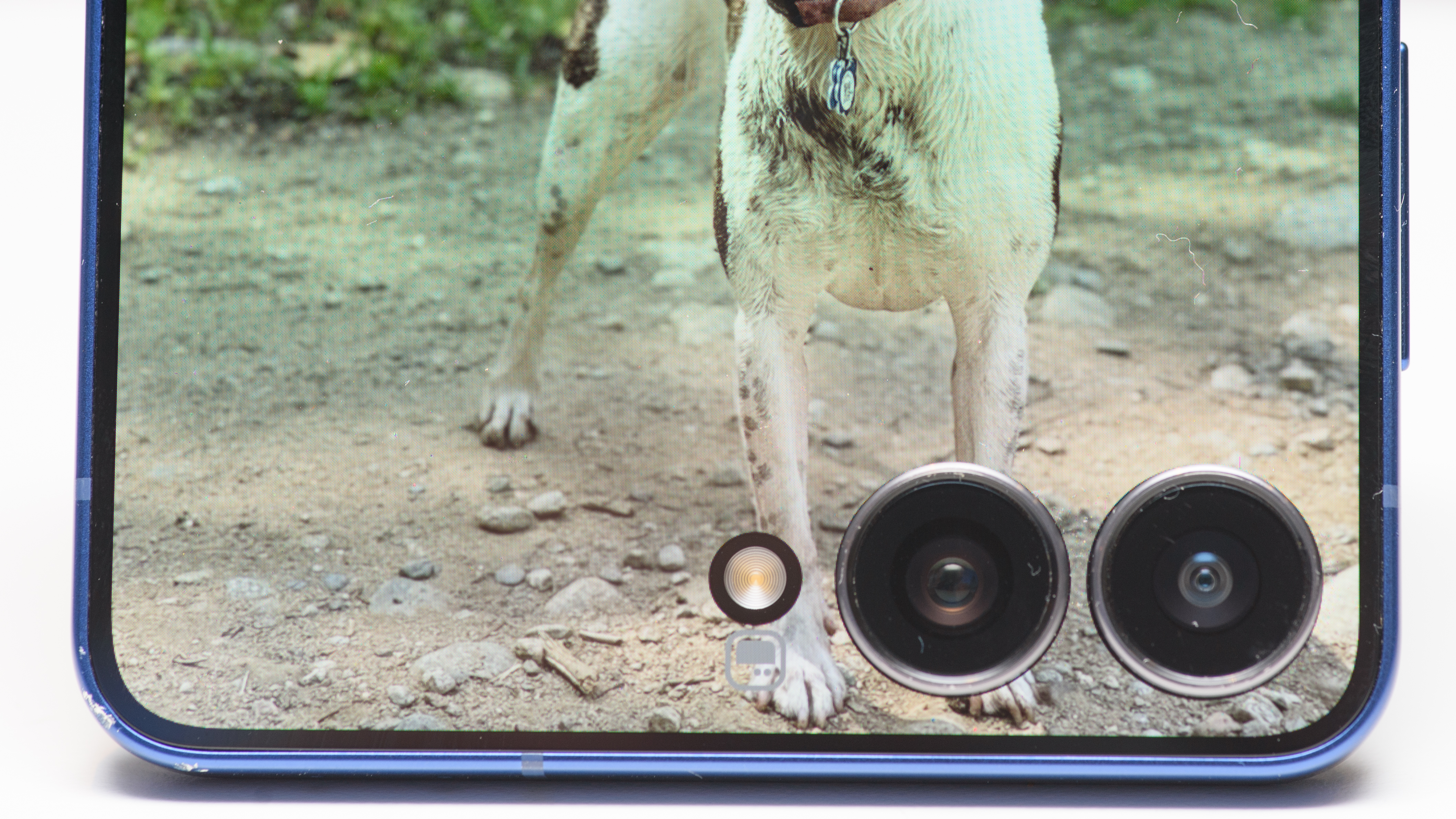
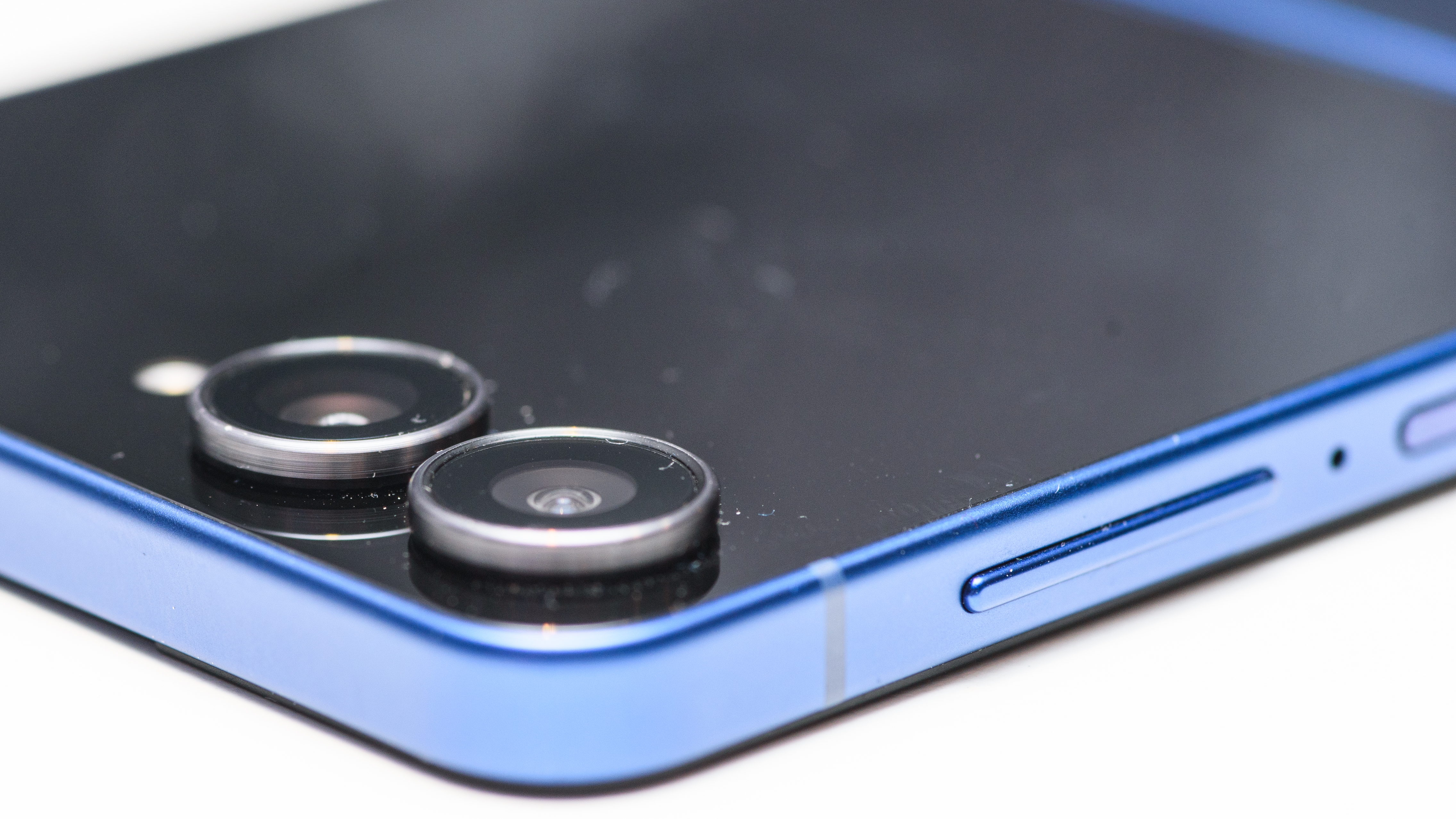
,透過-AI-加速重要之事,讓日常工作流程更直覺,更有效率。.jpg)
